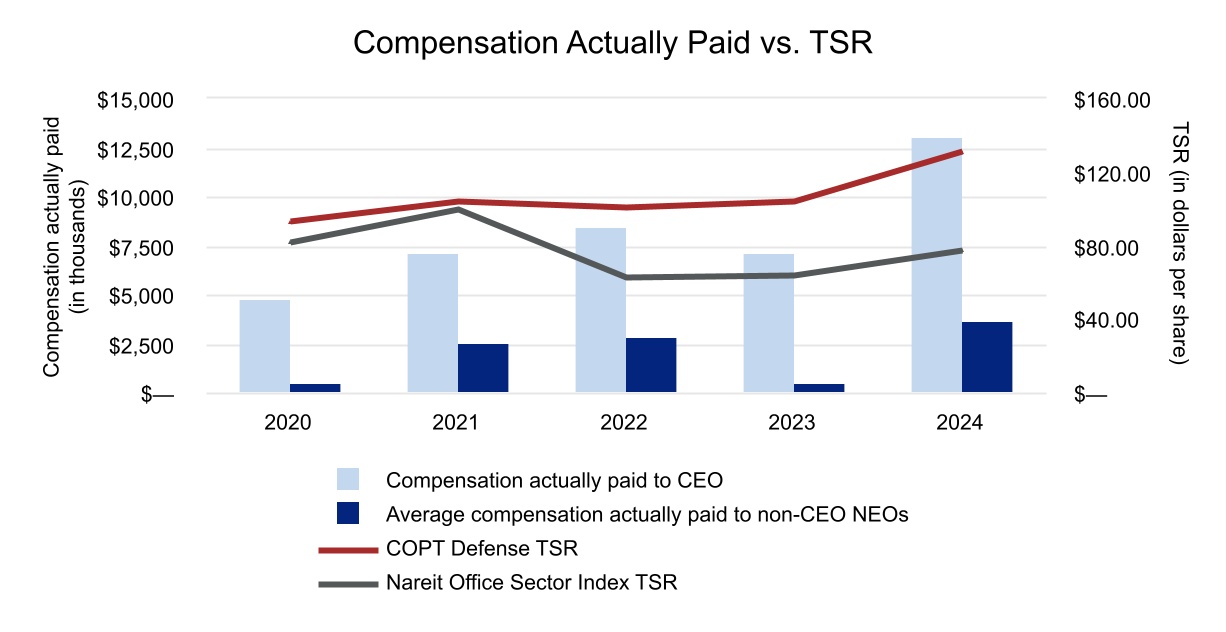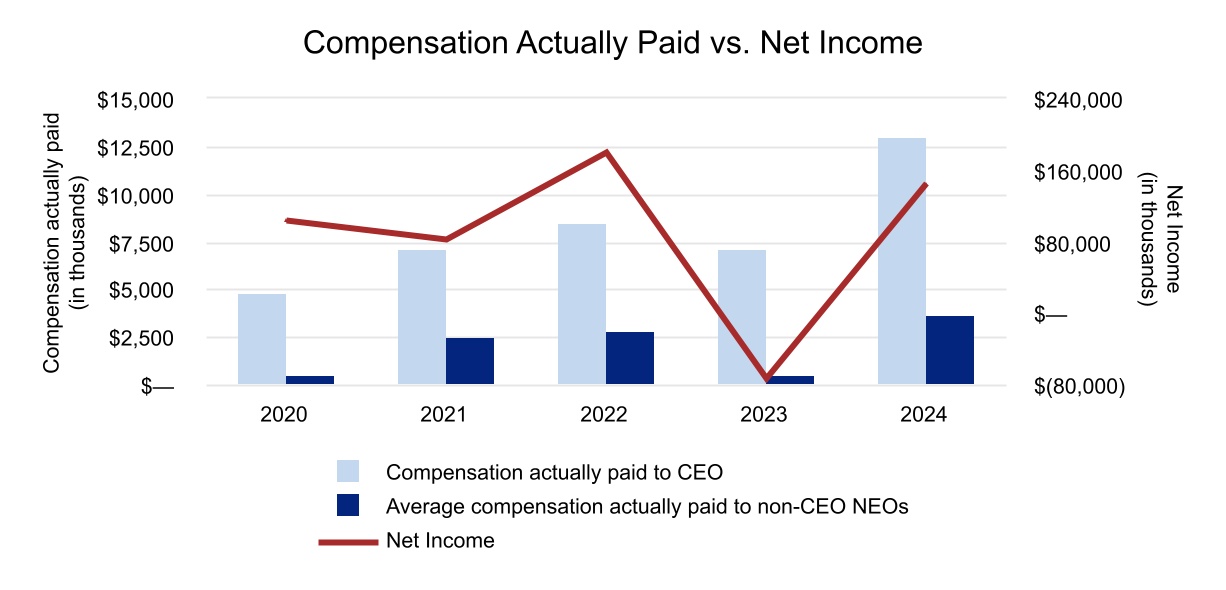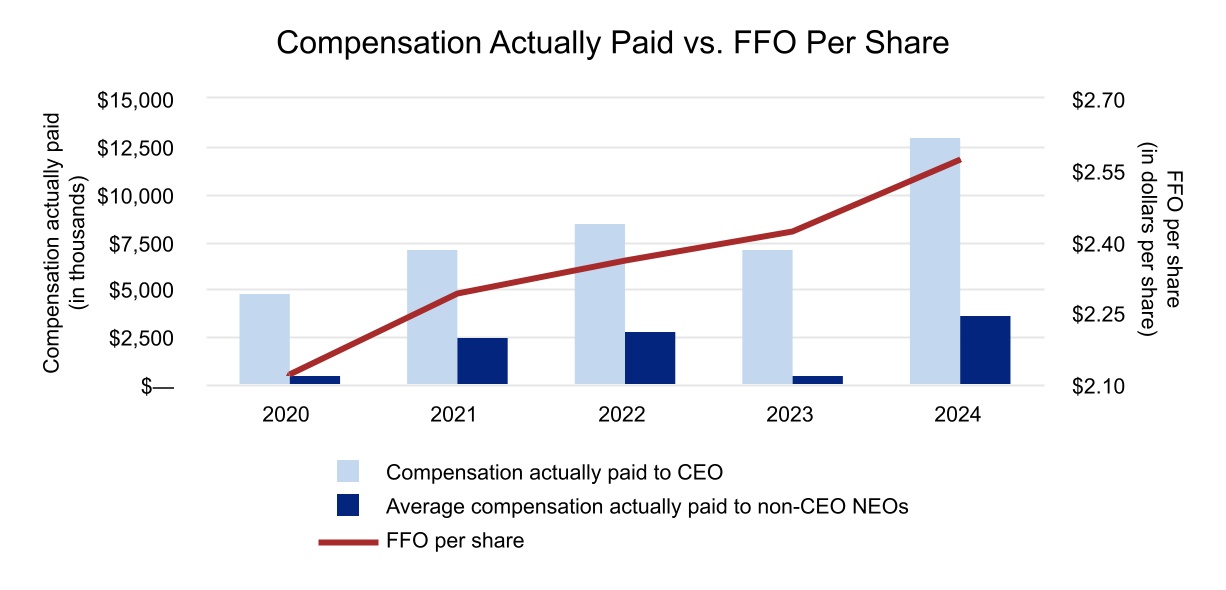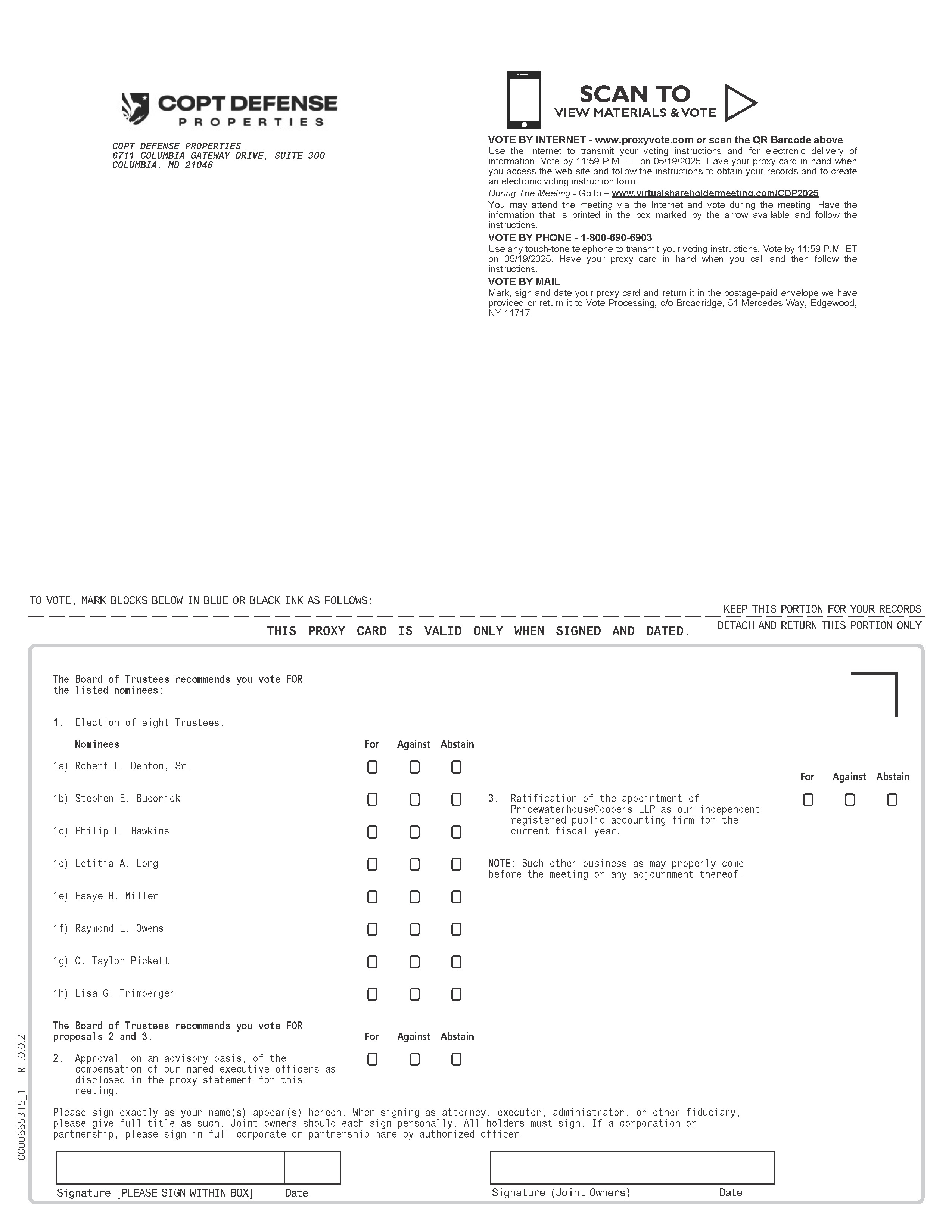DEF 14A0000860546falseiso4217:USDiso4217:USDxbrli:shares00008605462024-01-012024-12-3100008605462023-01-012023-12-3100008605462022-01-012022-12-3100008605462021-01-012021-12-3100008605462020-01-012020-12-31000086054612024-01-012024-12-310000860546ecd:EqtyAwrdsInSummryCompstnTblForAplblYrMemberecd:PeoMember2024-01-012024-12-310000860546ecd:EqtyAwrdsInSummryCompstnTblForAplblYrMemberecd:PeoMember2023-01-012023-12-310000860546ecd:EqtyAwrdsInSummryCompstnTblForAplblYrMemberecd:PeoMember2022-01-012022-12-310000860546ecd:EqtyAwrdsInSummryCompstnTblForAplblYrMemberecd:PeoMember2021-01-012021-12-310000860546ecd:EqtyAwrdsInSummryCompstnTblForAplblYrMemberecd:PeoMember2020-01-012020-12-310000860546ecd:YrEndFrValOfEqtyAwrdsGrntdInCvrdYrOutsdngAndUnvstdMemberecd:PeoMember2024-01-012024-12-310000860546ecd:YrEndFrValOfEqtyAwrdsGrntdInCvrdYrOutsdngAndUnvstdMemberecd:PeoMember2023-01-012023-12-310000860546ecd:YrEndFrValOfEqtyAwrdsGrntdInCvrdYrOutsdngAndUnvstdMemberecd:PeoMember2022-01-012022-12-310000860546ecd:YrEndFrValOfEqtyAwrdsGrntdInCvrdYrOutsdngAndUnvstdMemberecd:PeoMember2021-01-012021-12-310000860546ecd:YrEndFrValOfEqtyAwrdsGrntdInCvrdYrOutsdngAndUnvstdMemberecd:PeoMember2020-01-012020-12-310000860546ecd:ChngInFrValOfOutsdngAndUnvstdEqtyAwrdsGrntdInPrrYrsMemberecd:PeoMember2024-01-012024-12-310000860546ecd:ChngInFrValOfOutsdngAndUnvstdEqtyAwrdsGrntdInPrrYrsMemberecd:PeoMember2023-01-012023-12-310000860546ecd:ChngInFrValOfOutsdngAndUnvstdEqtyAwrdsGrntdInPrrYrsMemberecd:PeoMember2022-01-012022-12-310000860546ecd:ChngInFrValOfOutsdngAndUnvstdEqtyAwrdsGrntdInPrrYrsMemberecd:PeoMember2021-01-012021-12-310000860546ecd:ChngInFrValOfOutsdngAndUnvstdEqtyAwrdsGrntdInPrrYrsMemberecd:PeoMember2020-01-012020-12-310000860546ecd:ChngInFrValAsOfVstngDtOfPrrYrEqtyAwrdsVstdInCvrdYrMemberecd:PeoMember2024-01-012024-12-310000860546ecd:ChngInFrValAsOfVstngDtOfPrrYrEqtyAwrdsVstdInCvrdYrMemberecd:PeoMember2023-01-012023-12-310000860546ecd:ChngInFrValAsOfVstngDtOfPrrYrEqtyAwrdsVstdInCvrdYrMemberecd:PeoMember2022-01-012022-12-310000860546ecd:ChngInFrValAsOfVstngDtOfPrrYrEqtyAwrdsVstdInCvrdYrMemberecd:PeoMember2021-01-012021-12-310000860546ecd:ChngInFrValAsOfVstngDtOfPrrYrEqtyAwrdsVstdInCvrdYrMemberecd:PeoMember2020-01-012020-12-310000860546ecd:FrValAsOfPrrYrEndOfEqtyAwrdsGrntdInPrrYrsFldVstngCondsDrngCvrdYrMemberecd:PeoMember2024-01-012024-12-310000860546ecd:FrValAsOfPrrYrEndOfEqtyAwrdsGrntdInPrrYrsFldVstngCondsDrngCvrdYrMemberecd:PeoMember2023-01-012023-12-310000860546ecd:FrValAsOfPrrYrEndOfEqtyAwrdsGrntdInPrrYrsFldVstngCondsDrngCvrdYrMemberecd:PeoMember2022-01-012022-12-310000860546ecd:FrValAsOfPrrYrEndOfEqtyAwrdsGrntdInPrrYrsFldVstngCondsDrngCvrdYrMemberecd:PeoMember2021-01-012021-12-310000860546ecd:FrValAsOfPrrYrEndOfEqtyAwrdsGrntdInPrrYrsFldVstngCondsDrngCvrdYrMemberecd:PeoMember2020-01-012020-12-310000860546ecd:DvddsOrOthrErngsPdOnEqtyAwrdsNtOthrwsRflctdInTtlCompForCvrdYrMemberecd:PeoMember2024-01-012024-12-310000860546ecd:DvddsOrOthrErngsPdOnEqtyAwrdsNtOthrwsRflctdInTtlCompForCvrdYrMemberecd:PeoMember2023-01-012023-12-310000860546ecd:DvddsOrOthrErngsPdOnEqtyAwrdsNtOthrwsRflctdInTtlCompForCvrdYrMemberecd:PeoMember2022-01-012022-12-310000860546ecd:DvddsOrOthrErngsPdOnEqtyAwrdsNtOthrwsRflctdInTtlCompForCvrdYrMemberecd:PeoMember2021-01-012021-12-310000860546ecd:DvddsOrOthrErngsPdOnEqtyAwrdsNtOthrwsRflctdInTtlCompForCvrdYrMemberecd:PeoMember2020-01-012020-12-310000860546ecd:EqtyAwrdsInSummryCompstnTblForAplblYrMemberecd:NonPeoNeoMember2024-01-012024-12-310000860546ecd:EqtyAwrdsInSummryCompstnTblForAplblYrMemberecd:NonPeoNeoMember2023-01-012023-12-310000860546ecd:EqtyAwrdsInSummryCompstnTblForAplblYrMemberecd:NonPeoNeoMember2022-01-012022-12-310000860546ecd:EqtyAwrdsInSummryCompstnTblForAplblYrMemberecd:NonPeoNeoMember2021-01-012021-12-310000860546ecd:EqtyAwrdsInSummryCompstnTblForAplblYrMemberecd:NonPeoNeoMember2020-01-012020-12-310000860546ecd:YrEndFrValOfEqtyAwrdsGrntdInCvrdYrOutsdngAndUnvstdMemberecd:NonPeoNeoMember2024-01-012024-12-310000860546ecd:YrEndFrValOfEqtyAwrdsGrntdInCvrdYrOutsdngAndUnvstdMemberecd:NonPeoNeoMember2023-01-012023-12-310000860546ecd:YrEndFrValOfEqtyAwrdsGrntdInCvrdYrOutsdngAndUnvstdMemberecd:NonPeoNeoMember2022-01-012022-12-310000860546ecd:YrEndFrValOfEqtyAwrdsGrntdInCvrdYrOutsdngAndUnvstdMemberecd:NonPeoNeoMember2021-01-012021-12-310000860546ecd:YrEndFrValOfEqtyAwrdsGrntdInCvrdYrOutsdngAndUnvstdMemberecd:NonPeoNeoMember2020-01-012020-12-310000860546ecd:ChngInFrValOfOutsdngAndUnvstdEqtyAwrdsGrntdInPrrYrsMemberecd:NonPeoNeoMember2024-01-012024-12-310000860546ecd:ChngInFrValOfOutsdngAndUnvstdEqtyAwrdsGrntdInPrrYrsMemberecd:NonPeoNeoMember2023-01-012023-12-310000860546ecd:ChngInFrValOfOutsdngAndUnvstdEqtyAwrdsGrntdInPrrYrsMemberecd:NonPeoNeoMember2022-01-012022-12-310000860546ecd:ChngInFrValOfOutsdngAndUnvstdEqtyAwrdsGrntdInPrrYrsMemberecd:NonPeoNeoMember2021-01-012021-12-310000860546ecd:ChngInFrValOfOutsdngAndUnvstdEqtyAwrdsGrntdInPrrYrsMemberecd:NonPeoNeoMember2020-01-012020-12-310000860546ecd:ChngInFrValAsOfVstngDtOfPrrYrEqtyAwrdsVstdInCvrdYrMemberecd:NonPeoNeoMember2024-01-012024-12-310000860546ecd:ChngInFrValAsOfVstngDtOfPrrYrEqtyAwrdsVstdInCvrdYrMemberecd:NonPeoNeoMember2023-01-012023-12-310000860546ecd:ChngInFrValAsOfVstngDtOfPrrYrEqtyAwrdsVstdInCvrdYrMemberecd:NonPeoNeoMember2022-01-012022-12-310000860546ecd:ChngInFrValAsOfVstngDtOfPrrYrEqtyAwrdsVstdInCvrdYrMemberecd:NonPeoNeoMember2021-01-012021-12-310000860546ecd:ChngInFrValAsOfVstngDtOfPrrYrEqtyAwrdsVstdInCvrdYrMemberecd:NonPeoNeoMember2020-01-012020-12-310000860546ecd:FrValAsOfPrrYrEndOfEqtyAwrdsGrntdInPrrYrsFldVstngCondsDrngCvrdYrMemberecd:NonPeoNeoMember2024-01-012024-12-310000860546ecd:FrValAsOfPrrYrEndOfEqtyAwrdsGrntdInPrrYrsFldVstngCondsDrngCvrdYrMemberecd:NonPeoNeoMember2023-01-012023-12-310000860546ecd:FrValAsOfPrrYrEndOfEqtyAwrdsGrntdInPrrYrsFldVstngCondsDrngCvrdYrMemberecd:NonPeoNeoMember2022-01-012022-12-310000860546ecd:FrValAsOfPrrYrEndOfEqtyAwrdsGrntdInPrrYrsFldVstngCondsDrngCvrdYrMemberecd:NonPeoNeoMember2021-01-012021-12-310000860546ecd:FrValAsOfPrrYrEndOfEqtyAwrdsGrntdInPrrYrsFldVstngCondsDrngCvrdYrMemberecd:NonPeoNeoMember2020-01-012020-12-310000860546ecd:DvddsOrOthrErngsPdOnEqtyAwrdsNtOthrwsRflctdInTtlCompForCvrdYrMemberecd:NonPeoNeoMember2024-01-012024-12-310000860546ecd:DvddsOrOthrErngsPdOnEqtyAwrdsNtOthrwsRflctdInTtlCompForCvrdYrMemberecd:NonPeoNeoMember2023-01-012023-12-310000860546ecd:DvddsOrOthrErngsPdOnEqtyAwrdsNtOthrwsRflctdInTtlCompForCvrdYrMemberecd:NonPeoNeoMember2022-01-012022-12-310000860546ecd:DvddsOrOthrErngsPdOnEqtyAwrdsNtOthrwsRflctdInTtlCompForCvrdYrMemberecd:NonPeoNeoMember2021-01-012021-12-310000860546ecd:DvddsOrOthrErngsPdOnEqtyAwrdsNtOthrwsRflctdInTtlCompForCvrdYrMemberecd:NonPeoNeoMember2020-01-012020-12-31000086054622024-01-012024-12-31000086054632024-01-012024-12-31000086054642024-01-012024-12-31000086054652024-01-012024-12-31000086054662024-01-012024-12-31
UNITED STATES
SECURITIES AND EXCHANGE COMMISSION
Washington, D.C. 20549
SCHEDULE 14A
Proxy Statement Pursuant to Section 14(a) of
the Securities Exchange Act of 1934 (Amendment No. )
Filed by the Registrant ☒
Filed by a Party other than the Registrant ☐
Check the appropriate box:
☐ Preliminary Proxy Statement
☐ Confidential, for Use of the Commission Only (as permitted by Rule 14a-6(e)(2))
☒ Definitive Proxy Statement
☐ Definitive Additional Materials
☐ Soliciting Material under §240.14a-12
COPT DEFENSE PROPERTIES
(Name of Registrant as Specified in Its Charter)
(Name of Person(s) Filing Proxy Statement, if other than the Registrant)
Payment of Filing Fee (Check all boxes that apply):
☒ No fee required
☐ Fee paid previously with preliminary materials
☐ Fee computed on table in exhibit required by Item 25(b) per Exchange Act Rules 14a-6(i)(1) and 0-11
Message from our President +
Chief Executive Officer
Dear Fellow Shareholders,
You are cordially invited to attend our 2025 Annual Meeting of Shareholders to be held on May 20, 2025, at 9:30 a.m. Eastern Time. To ensure that each shareholder has an opportunity to participate in the Annual Meeting regardless of where they live or the number of shares they own, we will hold this year’s Annual Meeting virtually through an online webcast.
You will be able to attend the Annual Meeting, vote and submit questions by visiting www.virtualshareholdermeeting.com/CDP2025. The notice of Annual Meeting and proxy statement accompanying this letter contain further information about the meeting, including the different methods you can use to vote your proxy and how to participate in the meeting.
At this year’s meeting, you will be asked to vote on the following:
>election of eight people to our Board of Trustees;
>approval, on an advisory basis, of the compensation of our named executive officers as disclosed in the proxy statement for this meeting; and
>ratification of PricewaterhouseCoopers LLP’s appointment as our independent registered public accounting firm for the current fiscal year.
Thank you for your continued support of COPT Defense Properties, and I encourage you to participate in our Annual Meeting.

| | |
Stephen E. Budorick
President + Chief Executive Officer |
Notice of Annual Meeting
of Stockholders
| | | | | | | | | | | | | | |
| | | | |
TIME + DATE | | PLACE | | RECORD DATE |
9:30 a.m. Eastern Time
on Tuesday, May 20, 2025 | | Virtual Meeting
www.virtualshareholdermeeting.com/CDP2025 | | March 7, 2025 |
| | | | | | | | | | | | | | | | | |
| Items of Business | Board Recommendation | | How to Vote |
| 1 | Elect eight Trustees. | | | | Internet
www.proxyvote.com |
| | | | | |
| 2 | Approve, on an advisory basis, the compensation of our named executive officers as disclosed in the proxy statement for this meeting. | | | | Tablet or Smartphone
Scan the QR code on your proxy card, notice of internet availability of proxy materials or voting instruction form to vote with your mobile device. |
| | | | | |
| 3 | Ratify the appointment of PricewaterhouseCoopers LLP (“PwC”) as our independent registered public accounting firm for the current fiscal year. | | | | Telephone
1-800-690-6903
Call toll-free 24/7 |
| 4 | Transact any other business properly brought before the Annual Meeting. | | | | Mail
Complete, sign and date your proxy card and return it in the postage-paid envelope provided. |
You may vote on these proposals if you were a shareholder of record at the close of business on March 7, 2025.
For information about how to attend and vote at the meeting, see “Questions and Answers—How do I attend the meeting and vote?” in the proxy statement accompanying this notice. Additional information regarding the ability of shareholders to ask questions during the 2025 Annual Meeting, related rules of conduct and other materials for the 2025 Annual Meeting will be available at www.virtualshareholdermeeting.com/CDP2025.
Technical support will be available beginning at 9:00 a.m. Eastern Time on May 20, 2025, through the conclusion of the Annual Meeting by contacting Broadridge at the phone number that will be provided on the website for the virtual meeting.
By order of the Board of Trustees,
David L. Finch
Vice President, General Counsel + Secretary
YOUR VOTE IS IMPORTANT.
Please consider the issues presented in this Proxy Statement and vote your shares as promptly as possible.
Table of Contents
Proxy Statement Summary
This summary highlights selected information contained in this proxy statement, but it does not contain all the information you should consider. We urge you to read the whole proxy statement before you vote. This proxy statement is being made available to shareholders on or about March 31, 2025.
| | | | | | | | | | | | | | | | | |
| SHAREHOLDERS WILL BE VOTING ON THE FOLLOWING MATTERS: |
| Agenda Item | | Voting Recommendation | | More Information |
| 1. | Election of eight Trustees. | | | | |
| | | | | |
| 2. | | | | | |
| | | | | |
| 3. | | | | | |
TRUSTEE NOMINEES
| | | | | | | | | | | | | | | | | | | | | | | | | | | | | | | | | | | | | | | | | | | | |
| | | | | | | | Board Committees |
| | Age | | Trustee Since | | Audit | | Compensation | | Investment | | Nominating and Corporate Governance |
| | ROBERT L. DENTON, SR. Chairman of the Board | | 72 | | 1999 | | | | | | | | |
| | STEPHEN E. BUDORICK President + Chief Executive Officer | | 64 | | 2016 | | | | | | | | |
| | PHILIP L. HAWKINS | | 69 | | 2014 | | | | | | | | |
| | LETITIA A. LONG | | 66 | | 2020 | | | | | | | | |
| | ESSYE B. MILLER | | 61 | | 2022 | | | | | | | | |
| | RAYMOND L. OWENS | | 66 | | 2021 | | | | | | | | |
| | C. TAYLOR PICKETT | | 63 | | 2013 | | | | | | | | |
| | LISA G. TRIMBERGER | | 64 | | 2017 | | | | | | | | |
2024 BUSINESS HIGHLIGHTS
| | | | | | | | | | | | | | |
95% leased / 94% occupied | |
86% tenant retention rate | | 500,000 square feet of vacancy leasing |
| | | | |
282,000 operating square feet acquired through new investments | | 399,000 square feet placed in service, with 606,000 square feet under development at year end | | $1.23 diluted earnings per share 6% increase in diluted FFO per share, as adjusted for comparability |
Our 2024 business highlights included:
>strong occupancy and leased rates, tenant retention and vacancy leasing driven by continued demand for space across our Defense/IT Portfolio sub-segments;
>our first operating property acquisitions in nine years, which we completed to provide space needed to service existing demand in two highly-leased Defense/IT Portfolio sub-segments;
>continued growth through development, with three properties placed in service and four under development at year end, including two on which we commenced development during the year;
>growth in results of operations driven in large part by increased income from newly-developed properties placed in service and from increased rental and occupancy rates in our Same Property portfolio; and
>strong liquidity and financial position at year end, with most of the borrowing capacity available under our Revolving Credit Facility and the ability to fund the equity portion of our investing activities with cash flow from operations for the foreseeable future.
These highlights positioned the Company to meet or exceed virtually all of the objectives established in its 2024 corporate scorecard used under our executive compensation program, as described below under “Compensation Discussion and Analysis.”
ANNUAL SHAREHOLDER SAY-ON-PAY VOTES
| | | | | |
Shareholder Support | Shareholders will have the opportunity at our 2025 Annual Meeting of Shareholders to cast an advisory vote on the compensation of our named executive officers (“NEOs”) as disclosed in this proxy statement, which is referred to as a “say-on-pay proposal.” At our 2024 Annual Meeting of Shareholders, our shareholders overwhelmingly approved our say-on-pay proposal, casting 96.9% of the votes in favor of the proposal. Our Compensation Committee believes that our shareholders’ continued substantial approval indicates strong support for our approach to executive compensation. The Committee considers shareholder feedback and the outcome of our shareholder say-on-pay proposal votes when making future NEO compensation decisions. |
COMPENSATION HIGHLIGHTS
We design our compensation programs to link executive compensation to annual financial results and long-term total shareholder return (“TSR”). Our executive compensation program is designed to:
>align pay to performance;
>be commensurate to the compensation levels of executives performing similar responsibilities for an appropriate group of peer companies; and
>provide an appropriate balance between the various components of our executives’ compensation.
Our executive compensation includes:
>base salary as the fixed component intended to attract and retain executives;
>annual incentive award (“AIA”) cash bonuses that are formulaic and based on achievement of objectives established at the beginning of each year, approved by the Compensation Committee, and set forth in our annual corporate scorecard; and
>annual long-term equity incentive plan (“LTIP”) awards.
The compensation of our NEOs is predominantly performance-based, including AIAs and LTIP awards that are subject to objective performance thresholds, as reflected in the graphic below:
| | | | | | | | | | | | | | | | | | | | | | | |
| | AIAs
100% of NEO AIAs are formulaic and based on achievement of established corporate objectives. | | | | LTIP Awards
60% of NEO LTIP awards are performance-based, with payout tied to the TSR of our common shares for a three-year period, and 40% are time-based awards. | |
SHAREHOLDER OUTREACH
We place a high value on our Investor Relations function, as we routinely engage with existing and prospective shareholders and sell-side analysts in a variety of forums throughout the year.
In 2024, we held over 90 meetings, either in person or virtually, amounting to approximately 275 touchpoints with investors and sell-side analysts. We participated in six real estate conferences throughout 2024, sponsored by Nareit, Citi, Evercore ISI, Bank of America, and Jefferies. In addition, we participated in five non-deal roadshows with equity and fixed-income investors. These road shows were a combination of in-person and virtual meetings. To deepen our investors’ understanding of the Company and our assets, we hosted multiple property tours with shareholders and sell-side analysts. These tours provided an effective tool to communicate to analysts and investors key aspects of our competitive advantage, including our unique and advantaged land positions, expertise in developing and operating secured, specialized space and long-standing customer relationships.
We believe that our engagement efforts have been well received, as we were one of six companies nominated by IR Magazine for best in sector for real estate in 2024.
Frequently discussed topics through our shareholder outreach include:
>outlook for the 2025 fiscal year’s U.S. Department of Defense budget and implications for tenant demand;
>leasing environment;
>market rent growth;
>progress towards vacancy and investment leasing goals;
>external growth opportunities from development and acquisitions;
>sources and uses of capital;
>capital markets risk and exposure;
>financial position; and
>earnings and dividends growth outlook.
SUSTAINABILITY
As further detailed in the section below entitled “Company’s Commitment to Sustainability,” we remain committed to maintaining and enhancing our sustainable development and building operations programs, thereby creating a more resilient and efficient portfolio that benefits our tenants and our shareholders. Our governance structure positions the Board to provide oversight with respect to the Company’s environmental risks and opportunities.
| | | | | | | | |
| | Recent Achievements |
| | Received Green Star recognition from GRESB for the 10th consecutive year. |
| | In 2019, we set Environmental Goals to be achieved by 2025 with respect to reducing our energy use intensity and Scope 1 and Scope 2 GHG Emissions and to maintain our water use intensity. We achieved those reduction goals ahead of our 2025 target date. |
| | Reported information with respect to the Company’s risks and emissions data to align with applicable frameworks under both SASB and Global Reporting Initiative. |
| | Recognized by Newsweek as one of America’s Most Responsible Companies in 2024 based on 2023 data, ranking in the top 30 in the Real Estate and Housing Industry. |
| | | | | | | | | | | | | | | | | | | | |
| | | | | | |
Proposal
1 | ELECTION OF EIGHT TRUSTEES | Our Board
recommends
a vote FOR
each of the
eight Trustee
nominees.
|
Our Bylaws provide for the annual election of Trustees at the Annual Meeting of Shareholders. Our Board, at the recommendation of its Nominating and Corporate Governance Committee, has nominated eight of our current Trustees for election at the Annual Meeting. Each nominee has agreed to serve a one-year term. If any nominee is unable to stand for election, the Board may provide for a lesser number of Trustees or designate a substitute. In the latter event, shares represented by proxies will be voted for a substitute nominee. |
1.Robert L. Denton, Sr. | | 4.Letitia A. Long | | 7.C. Taylor Pickett |
2.Stephen E. Budorick | | 5.Essye B. Miller | | 8.Lisa G. Trimberger |
3.Philip L. Hawkins | | 6.Raymond L. Owens | | |
| | | | |
Vote Required
In an uncontested election, to be elected to the Board, a nominee for Trustee must receive the affirmative vote of the majority of the votes cast for and against such nominee. The majority voting standard does not apply in contested elections. Broker non-votes, if any, and abstentions will not be treated as votes cast for or against the election of a nominee for Trustee and will have no effect on the outcome of the vote. Additional information with respect to voting procedures and the election of the Trustees are available in the Questions and Answers section of this proxy statement. Pursuant to our Corporate Governance Guidelines, the term of Thomas F. Brady, a member of the Board of Trustees since 2002, will expire on May 20, 2025 at the Annual Meeting, and he will not stand for re-election.
SNAPSHOT OF TRUSTEE NOMINEES
BOARD QUALIFICATIONS, TENURE AND REFRESHMENT
Our Board represents a balance of longer-tenured members with in-depth knowledge of our business and newer members who bring valuable additional attributes, skills, and experience. The specific experience, qualifications, attributes and skills that led the Board to nominate Trustees for election are set forth in the summary biographical information below. Each year, the Board evaluates whether it has the right mix of skills and perspectives to provide oversight to the Company and whether it is the right size to effectively perform its duties. When appropriate, we refresh our Board, as exemplified by the nomination of three new Trustees in the last five years. We believe this activity aligns the Board’s composition to our long-term strategy and broadens its perspectives to enhance its performance. Through continued Trustee succession planning, development and periodic refreshment, we believe that our Board is well positioned for the future.
Proposal 1 - Election of Trustees
| | | | | | | | | | | | | | | | | | | | | | | | | | | | | | | | |
| Trustee Skills and Experience | Robert L. Denton, Sr. | Stephen E. Budorick | Philip L. Hawkins | Letitia A. Long | Essye B. Miller | Raymond L. Owens | C. Taylor Pickett | Lisa G. Trimberger |
| | Executive Leadership | | | | | | | | |
| | Public Company Board Service | | | | | | | | |
| | Financial Literacy/Accounting | | | | | | | | |
| | Finance/Capital Markets | | | | | | | | |
| | Risk Management | | | | | | | | |
| | Corporate Governance | | | | | | | | |
| | Real Estate Investment | | | | | | | | |
| | Strategic Planning + Leadership | | | | | | | | |
| | Technology/Cybersecurity Experience | | | | | | | | |
| | Government/Regulatory Affairs | | | | | | | | |
| | Audit Committee Financial Expert | | | | | | | | |
Proposal 1 - Election of Trustees
BIOGRAPHICAL INFORMATION
Set forth below is certain biographical information with respect to the nominees for election as Trustees, including professional experience, Board Committee memberships, skills and qualifications.
| | | | | | | | | | | | | | | | | |
| | Robert L. Denton, Sr. | Age: 72 |
| Independent Trustee Since: 1999 |
| BACKGROUND The Shidler Group >Managing Partner—New York (1994-2013) Providence Capital, Inc. >Co-Founder and Managing Director (1991-1994) Jefferies Group LLC (f/k/a Jefferies & Co.) >Co-Head Mergers and Acquisitions (1987-1991) Pacific Equity Ltd. >Head of Investment Research (1985-1987) Booz Allen & Hamilton, Inc. >Consulting-Principal (1980-1985) OTHER EXPERIENCE Co-Founder of several organizations sponsored by The Shidler Group, including: >COPT Defense Properties (NYSE: CDP) >First Industrial Realty Trust, Inc. (NYSE: FR) >Primus Guaranty, Ltd. (formerly NYSE: PRS) Structured execution of initial public offering for TriNet Corporate Realty Trust (formerly NYSE: TRI) Co-Inventor: Business process patent to create, price and manage electronic trading and distribution of credit risk transfer products (U.S. Pat. Appl. 20020055897) EDUCATION >BS in Economics—University of Pennsylvania >MBA—Wharton School of the University of Pennsylvania COPT BOARD SERVICE Mr. Denton’s extensive real estate, financial, and consulting career, including as a senior executive in a well-known private real estate investment and acquisition company, enables him to provide meaningful insight and leadership into our strategic initiatives, with specific focus on the analysis of our proposed investment, development and capital market initiatives. His professional experience and history with the Company, including being the former chair of the Nominating and Corporate Governance and Investment Committees, make Mr. Denton ideally suited to be our Chairman of the Board. |
| CHAIRMAN OF THE BOARD SINCE JANUARY 2024 | |
COMMITTEES Audit, Investment,
Nominating and Corporate Governance | |
| Skills and Qualifications | |
| | Public Company Board Service | |
| | Financial Literacy/
Accounting | |
| | Finance/Capital Markets | |
| | Corporate Governance | |
| | Real Estate Investment | |
| | Strategic Planning + Leadership | |
| | Audit Committee Financial Expert | |
Proposal 1 - Election of Trustees
| | | | | | | | | | | | | | | | | |
| | Stephen E. Budorick | Age: 64 |
| Trustee Since: 2016 |
| BACKGROUND COPT Defense Properties >President + Chief Executive Officer (“CEO”) (2016-Present) >Executive Vice President + Chief Operating Officer (“COO”) (2011-2016) Callahan Capital Partners, LLC >Executive Vice President of Asset Management (2006-2011) Trizec Properties, Inc. >Executive Vice President Central Region (1997-2006) Miglin Beitler Management Company >Executive Vice President (1991-1997) Lasalle Partners, Ltd. (now known as Jones Lang LaSalle, Inc.) >Vice President Asset Management (1988-1991) American Hospital Association >Facilities management and planning (1983-1988) EDUCATION >BS in Industrial Engineering—University of Illinois >MBA—University of Chicago COPT BOARD SERVICE Mr. Budorick’s experience as our President + CEO and his prior experience as our COO, as well as his depth of both operational and financial expertise, make him highly qualified to serve as a valued member of our Board. In his role as CEO, Mr. Budorick is a critical link between the Board and management. His experience at initiating and implementing strategic initiatives and continued engagement in the commercial real estate community are valuable assets to the Board. |
PRESIDENT + CHIEF
EXECUTIVE OFFICER
(“CEO”) SINCE MAY 2016 | |
COMMITTEES
None | |
| Skills and Qualifications | |
| | Executive Leadership | |
| | Financial Literacy/ Accounting | |
| | Finance/Capital Markets | |
| | Corporate Governance | |
| | Real Estate Investment | |
| | Strategic Planning + Leadership | |
| | | | | | | | | | | | | | | | | |
| | Philip L. Hawkins | Age: 69 |
| Independent Trustee Since: 2014 |
| BACKGROUND DCT Industrial Trust (formerly NYSE: DCT) >President and Chief Executive Officer (2006-2018) CarrAmerica Realty Corporation (formerly NYSE: CRE) >Various positions, including President and Chief Operating Officer (1996-2006) LaSalle Partners, Ltd. (now known as Jones Lang LaSalle, Inc.) >Various senior executive positions in real estate investment, development, leasing and management (1982-1996) OTHER PUBLIC COMPANY BOARDS Former (past 5 years) >DCT Industrial Trust (formerly NYSE: DCT) >Prologis Inc. (NYSE: PLD) >Welltower (NYSE: WELL) OTHER EXPERIENCE Hamilton College >Trustee (2012-Present) Link Logistics Real Estate >Executive Chairman (2020-Present) Pure Industrial >Board Member (2022-Present) WPG (formerly Washington Prime Group, Inc.; formerly NYSE: WPG) >Board Member (2022-Present) EDUCATION >BA in Economics—Hamilton College >MBA—University of Chicago COPT BOARD SERVICE Mr. Hawkins’ lengthy real estate career and current and past executive positions, both in the office and industrial sectors, with publicly traded companies, qualifies him to provide an experienced perspective on our strategic initiatives, to assess capital allocation and other investment decisions, as well as to evaluate compensation matters. In addition, Mr. Hawkins’ extensive public company board service enhances the insights he brings as a Board member. |
COMMITTEES Compensation,
Investment (Chair) | |
| Skills and Qualifications | |
| | Executive Leadership | |
| | Public Company Board Service | |
| | Financial Literacy/ Accounting | |
| | Finance/Capital Markets | |
| | Real Estate Investment | |
| | Strategic Planning + Leadership | |
| | | |
Proposal 1 - Election of Trustees
| | | | | | | | | | | | | | | | | |
| | Letitia A. Long | Age: 66 |
| Independent Trustee Since: 2020 |
| BACKGROUND US Government >Director, National Geospatial-Intelligence Agency (2010-2014) >Deputy Director, Defense Intelligence Agency (“DIA”) (2006-2010) >Deputy Undersecretary of Defense for Intelligence (2003-2006) >Deputy Director, Naval Intelligence (2000-2003) >Various positions with US Intelligence (1978-2000) OTHER PUBLIC COMPANY BOARDS Current >T-Mobile US, Inc. (NASDAQ: TMUS) >Parsons Corporation (NYSE: PSN) Former (past 5 years) >Raytheon Company (NYSE: RTX) >Urthecast (TSX: UR) OTHER EXPERIENCE Noblis, Inc. >Vice Chair of the Board of Trustees Virginia Polytechnic Institute and State University >Virginia Tech Board of Visitors EDUCATION >BS in Electrical Engineering—Virginia Polytechnic Institute and State University >MS in Engineering—Catholic University of America COPT BOARD SERVICE Ms. Long’s experience working in Director-level positions within the U.S. Department of Defense and multiple intelligence agencies, as well as her experience as a public company board member, positions her to contribute to our strategy, governance matters and risk management. |
COMMITTEES Audit, Nominating and Corporate Governance (Chair) | |
| Skills and Qualifications | |
| | Executive Leadership | |
| | Public Company Board Service | |
| | Financial Literacy/Accounting | |
| | Risk Management | |
| | Corporate Governance | |
| | Strategic Planning + Leadership | |
| | Technology/Cybersecurity Experience | |
| | Government,
Regulatory Affairs | |
| | | | | | | | | | | | | | | | | |
| | Essye B. Miller | Age: 61 |
| Independent Trustee Since: 2022 |
| BACKGROUND Executive Business Management LLC >President and Chief Executive Officer (2020 to present) US Government >Department of Defense (“DOD”) >Principal Deputy Chief Information Officer (“CIO”) (2018-2020) >Deputy CIO for Cybersecurity (“CISO”) (2016-2018) >Acting CIO (December 2017-May 2018) >Department of U.S. Army >CISO and Cybersecurity (2015-2017) >Department of U.S. Air Force >Director of Information Management (2006-2014) OTHER EXPERIENCE Concordance Academy and the National Cyber Scholarship Foundation >Non-Profit Board Member EDUCATION >Honorary Doctor of Science—Talladega College >MBA in Business Administration—Troy State University >Master of Strategic Studies—U.S. Air Force, Air University COPT BOARD SERVICE Ms. Miller’s extensive experience in senior positions in the U.S. Government, and her experience with information technology and cybersecurity positions her to contribute to our strategy, cybersecurity and risk management matters. |
COMMITTEES Audit, Nominating and Corporate Governance | |
Skills and Qualifications | |
| | Executive Leadership | |
| | Risk Management | |
| | Corporate Governance | |
| | Strategic Planning + Leadership | |
| | Technology/Cybersecurity Experience | |
| | Government,
Regulatory Affairs | |
Proposal 1 - Election of Trustees
| | | | | | | | | | | | | | | | | |
| | Raymond L. Owens | Age: 66 |
| Independent Trustee Since: 2021 |
| BACKGROUND Piedmont Office Realty Trust (NYSE: PDM) >Chief Investment Officer and Executive Vice President of Capital Markets (2016-2017) >Executive Vice President, Capital Markets (2007-2016) Wells Real Estate Funds >Managing Director and Executive Vice President of Capital Markets (2002-2007) PM Realty Group, LP >Senior Vice President (1997-2002) Various Roles, Capital Markets and Real Estate Investment >General Electric Investments, HPI Realty Partners, Travelers Realty Investment Company and Aetna Realty Investors (1982-1997) OTHER EXPERIENCE Stephen M. Ross School of Business at the University of Michigan >Member, Advisory Board Ross Real Estate Fund (2016-2020) >Member, Alumni Board of Governors (2010-2016) EDUCATION >BA in Economics—University of Michigan, Ann Arbor >MBA in Marketing and Real Estate—Stephen M. Ross School of Business at the University of Michigan, Ann Arbor COPT BOARD SERVICE Mr. Owens’ lengthy real estate career and past executive positions overseeing capital markets transactions and investments at both publicly-traded and private companies qualifies him to provide an experienced perspective on our strategic initiatives and to assess capital allocation and other investment decisions. |
COMMITTEES Compensation, Investment | |
| Skills and Qualifications | |
| | Executive Leadership | |
| | Financial Literacy/Accounting | |
| | Finance/Capital Markets | |
| | Real Estate Investment | |
| | Strategic Planning + Leadership | |
| | | |
| | | | | | | | | | | | | | | | | |
| | C. Taylor Pickett | Age: 63 |
| Independent Trustee Since: 2013 |
| BACKGROUND Omega Healthcare Investors, Inc. (NYSE: OHI) >Chief Executive Officer (2001-Present) Integrated Health Services, Inc. >Executive Vice President and Chief Financial Officer (1998-2001) >Various executive positions (1993-1998) PHH Corporation >Vice President of Taxes (1991-1993) KPMG >Certified public accountant (1984-1991) OTHER PUBLIC COMPANY BOARDS Current >Omega Healthcare Investors, Inc. (NYSE: OHI) EDUCATION >BA in Accounting—University of Delaware >JD—University of Maryland School of Law >Certified Public Accountant COPT BOARD SERVICE Mr. Pickett’s extensive executive experience at various public companies and his financial expertise are assets to considering our strategic initiatives, capital allocation decisions and compensation matters, and supplement our financial oversight. In addition, his active role as a chief executive officer of a publicly-traded REIT serves as a valuable resource for both management and the Board. |
COMMITTEES Compensation (Chair),
Investment | |
| Skills and Qualifications | |
| | Executive Leadership | |
| | Public Company Board Service | |
| | Financial Literacy/Accounting | |
| | Finance/Capital Markets | |
| | Real Estate Investment | |
| | Strategic Planning + Leadership | |
| | | | | | | | |
10 | COPT Defense Properties | |
Proposal 1 - Election of Trustees
| | | | | | | | | | | | | | | | | |
| | Lisa G. Trimberger | Age: 64 |
| Independent Trustee Since: 2017 |
| BACKGROUND Mack Capital Investments LLC >Principal and owner (2014-Present) Deloitte & Touche LLP >Audit partner and other positions (1983-2014) >Co-chair of the Nominating Committee of the Board of Directors >Leader of the firm’s National Women’s Initiative for development and retention of women professionals OTHER PUBLIC COMPANY BOARDS Current >EPR Properties (NYSE: EPR) >Luxfer Holdings PLC (NYSE: LXFR) OTHER EXPERIENCE NACD >Member and Board Leadership Fellow National Association of Real Estate Investment Trusts >Member EDUCATION >BS in Accounting—St. Cloud State University >Certified Public Accountant >CERT Certificate in Cybersecurity Oversight—NACD, Ridge Global and Carnegie Mellon University’s CERT division >Women’s Director Development Executive Program—J.L. Kellogg School of Management of Northwestern University COPT BOARD SERVICE Ms. Trimberger’s experience as an audit partner in a Big Four firm positions her to contribute significantly as a financial expert in areas including financial and audit oversight, corporate governance and risk
management matters. |
COMMITTEES Audit (Chair),
Nominating and Corporate Governance | |
| Skills and Qualifications | |
| | Public Company Board Service | |
| | Financial Literacy/Accounting | |
| | Risk Management | |
| | Corporate Governance | |
| | Strategic Planning + Leadership | |
| | Audit Committee Financial Expert | |
| | | |
Our Board of Trustees
TRUSTEE INDEPENDENCE
We believe that for our Board to effectively serve in its capacity, it is important, and the New York Stock Exchange (“NYSE”) requires, that at least a majority of our Trustees be independent as defined by the applicable rules of the NYSE. Therefore, we require that a substantial majority of the Board be independent, as so defined. No Trustee will be considered independent unless the Board affirmatively determines that the Trustee has no material relationship with the Company (directly or as a partner, shareholder or officer of an organization that has a relationship with the Company). A Trustee will not be deemed independent if:
>the Trustee is, or within the last three years, has been, employed by the Company or a member of his/her immediate family is, or within the last three years has been, an executive officer of the Company;
>the Trustee or a member of his/her immediate family receives, or during any 12-month period within the last three years received, more than $120,000 in direct compensation from the Company (other than Trustee and committee fees and pension or other forms of deferred compensation for prior service, provided such compensation is not contingent in any way on continued service);
>the Trustee is a current partner or employee of the Company’s internal auditors or outside independent registered public accounting firm serving as the Company’s auditors, or a member of the Trustee’s immediate family is a current partner of such auditors or firm, or is a current employee of such auditors or such firm and personally works on the Company’s audit, or the Trustee or a member of the Trustee’s immediate family was within the last three years a partner or employee of such auditors or firm and personally worked on the Company’s audit during that time;
>the Trustee or a member of his/her immediate family is, or within the last three years has been, employed as an executive officer of another entity of which any of the Company’s present executive officers at the time serves or served on that other entity’s compensation committee;
>the Trustee is a current employee, or a member of his/her immediate family is a current executive officer, of another company that has made payments to, or received payments from, the Company for property or services in an amount which, in any of the last three fiscal years, exceeded the greater of $1 million or 2% of such other company’s consolidated gross revenues; or
>the Trustee is a current executive officer or compensated employee, or an immediate family member of the Trustee is a current executive officer, of a charitable organization to which the Company has made donations in an amount which, in any of the last three fiscal years, exceeded the greater of $1 million or 2% of such charitable organization’s donations.
The Board has determined that each of our nominees for Trustee meets the independence guidelines described above except for Mr. Budorick, our President + CEO. The Board has also determined that Mr. Brady meets such guidelines.
LEADERSHIP STRUCTURE OF THE BOARD OF TRUSTEES
Our governance documents provide the Board with flexibility to select the appropriate leadership structure for the Company within the confines of applicable laws and regulations. In making leadership structure determinations, the Board considers many factors, including the specific needs of our business and what is in the best interests of the Company’s shareholders. Our current leadership structure is comprised of an independent Chairman of the Board separate from the CEO. Among other things, the Board believes that having an independent Chairman enhances the ability of non-management Trustees to raise issues and concerns for Board consideration without immediately involving management and has determined that separating the Chairmanship and CEO roles is the most appropriate structure at this time.
Under our Bylaws, the Chairman of the Board presides over the meetings of the Board and of the shareholders at which he or she is present and shall in general oversee all of the business and affairs of the Company. In the absence of the Chairman, the Chair of the Nominating and Corporate Governance Committee shall preside over the meetings of the Trustees and of the shareholders at which he or she shall be present. The Chairman, with the CEO’s input, prepares the agenda for each Board meeting and, with input from the Chairman of the Nominating and
| | | | | | | | |
12 | COPT Defense Properties | |
Corporate Governance Committee, reviews and sets the master calendar for the meetings of the Board in a given year. Such agenda and master calendar include a regular review of our Enterprise Risk Management program and provides for updates to that program as reviewed by the Audit Committee and then the entire Board. Our CEO periodically discusses with the Chairman of the Board communications with our shareholders, and while the Chairman may be involved in meetings with shareholders, we typically have our NEOs and our Investor Relations team communicate directly with shareholders. The Chairman of the Board shall also perform such other duties as may be assigned by the Trustees. Our NEOs have responsibility for implementation of the policies of the Company adopted by the Board and for the administration of the business affairs of the Company.
TRUSTEE ATTENDANCE POLICY
The Board holds a minimum of four regularly scheduled meetings per year, including the meeting of the Board held in conjunction with our annual meeting of shareholders. Trustees are expected to attend all regularly scheduled meetings and to have reviewed, prior to the meetings, all meeting materials distributed to them. Trustees are expected to participate in all regularly scheduled meetings, and a Trustee who is unable to participate in a meeting is expected to notify the Chairman of the Board in advance of such meeting. If a Trustee participates in a regularly scheduled meeting via teleconference, videoconference or such other similar means for the entire meeting, such Trustee shall be deemed to have attended the meeting for the purposes of determining whether a quorum exists and for voting purposes. A Trustee may not send a representative with a proxy to vote on his or her behalf if such Trustee is not able to attend a scheduled meeting.
Trustees are expected to participate in our annual meeting of shareholders. All of our Trustees who were nominated for election at the time of the 2024 Annual Meeting of Shareholders were in attendance at the meeting.
MEETINGS OF INDEPENDENT TRUSTEES
The independent Trustees meet in executive session at each of the regularly scheduled meetings. The Chairman of the Board presides over the executive sessions. The independent Trustees may meet in executive session at any time to consider issues that they deem important to address without management present.
TRUSTEE COMPENSATION
Employee Trustees receive no compensation other than their compensation as an employee for serving on the Board or its committees. During 2024, non-employee Trustees received the following:
>Fees, paid in cash, set forth below:
| | | | | | | | |
Annual Trustee retainer | | $ | 70,000 | |
| Annual Chair of Board fee | | $ | 70,000 | |
| Annual committee chair fee | | |
| Audit | | $ | 17,500 | |
| Compensation | | $ | 15,000 | |
| Investment | | $ | 13,000 | |
| Nominating and Corporate Governance | | $ | 15,000 | |
| Annual committee fees | | |
| Audit | | $ | 14,000 | |
| Compensation | | $ | 12,000 | |
| Investment | | $ | 10,000 | |
| Nominating and Corporate Governance | | $ | 12,000 | |
| Fee for each Board meeting attended after first 12 per calendar year | | $ | 2,000 | |
The fees set forth above have not changed from 2023. Our Trustee compensation is reviewed against market and our peers bi-annually in consultation with our external compensation consultant.
With respect to the annual Trustee retainer and annual fees, beginning with 2025, Trustees may elect to receive the entirety of their annual Trustee retainer and Board and committee annual fees in the form of restricted shares (“RSs”), restricted share units (also referred to herein as “deferred share awards”) or time-
based profits interest units in COPT Defense Properties, L.P. (our “Operating Partnership”). If a Trustee elects to receive such grants in lieu of annual Trustee retainer and Board and committee annual fees, then such grant will be made as of the date of the Annual Shareholder Meeting occurring in the year in which such retainer and fees are to be earned by the Trustee, provided that the Trustee continues to serve on the Board through the date of such Annual Shareholders’ Meeting. The value of such grant shall be calculated using the 15-day trailing average share price as of the grant date.
>Annual grants of RSs, deferred share awards or time-based profit interest units in an award value of $105,000, calculated utilizing the 15-day trailing average share price as of the grant date; and
>Reimbursement for out-of-pocket expenses, such as travel and lodging costs incurred in connection with meeting attendance.
Forfeiture restrictions for the aforementioned equity award grants will lapse on the first anniversary of the grant date, provided that the Trustee remains in his or her position. With respect to RSs and deferred share awards, the resulting common shares are issued either on the first anniversary of the grant date for RSs or on a later date selected by the Trustee for deferred share awards. Holders of RSs and deferred share awards are entitled to receive dividends on such shares. Prior to vesting and occurrence of a book-up event (as defined under income tax regulations), time-based profit interest units carry substantially the same rights to distributions as non-profit interest unit common units but carry no redemption rights. Holders of RSs can cast votes for such shares, while holders of the other award types cannot cast votes for such units.
The table below sets forth the total amounts of compensation earned by our non-employee Trustees during 2024:
| | | | | | | | | | | | | | | | | | | | |
| Name of Trustee | | Fees Earned (Paid in Cash)(1) | | Equity Awards(2) | | Total |
| Robert L. Denton, Sr. | | $ | 178,102 | | | $ | 108,455 | | | $ | 286,557 | |
| Thomas F. Brady | | $ | 104,000 | | | $ | 108,455 | | | $ | 212,455 | |
| Philip L. Hawkins | | $ | 105,000 | | | $ | 108,455 | | | $ | 213,455 | |
| Steven D. Kesler(3) | | $ | 33,571 | | | $ | — | | | $ | 33,571 | |
| Letitia A. Long | | $ | 108,898 | | | $ | 108,455 | | | $ | 217,353 | |
| Essye B. Miller | | $ | 96,000 | | | $ | 108,455 | | | $ | 204,455 | |
| Raymond L. Owens | | $ | 92,000 | | | $ | 108,455 | | | $ | 200,455 | |
| C. Taylor Pickett | | $ | 107,000 | | | $ | 108,455 | | | $ | 215,455 | |
| Lisa G. Trimberger | | $ | 113,500 | | | $ | 108,455 | | | $ | 221,955 | |
(1)This column reports the amount of cash compensation earned in 2024 for Board and committee service.
(2)Includes the annual grant of RSs, deferred share awards or time-based profits interest units awarded to the Trustees on May 9, 2024 at a grant date fair value of $24.66 per share/unit. See Notes 2 and 12 to our consolidated financial statements included in our Annual Report on Form 10-K for additional information regarding share-based compensation, including assumptions made in determining values for awards. As of December 31, 2024, none of our Trustees held outstanding stock options.
(3)Effective May 9, 2024, Mr. Kesler retired from the Company’s Board of Trustees and committees of the Board of Trustees.
We formerly offered our Trustees the ability to participate in a nonqualified deferred compensation plan but, effective December 31, 2019, froze additional entry into that plan. Prior to that time, this plan allowed for the deferral of up to 100% of a participant’s cash compensation on a pre-tax basis and enabled such participants to receive a tax-deferred return on such deferrals. The plan does not guarantee a return on or above amounts deferred or provide for above-market preferential earnings. The plan is not qualified under the Employee Retirement and Income Security Act of 1974. Participants must elect upon such participant’s separation from the Board a payout schedule for such deferrals and may elect that upon such participant’s death, payments will be made in lump sum to parties designated by the participant. Participant account balances are fully vested and participation in the deferred compensation plan was voluntary.
| | | | | | | | |
14 | COPT Defense Properties | |
BOARD COMMITTEES
The Board has four committees: (1) the Audit Committee; (2) the Compensation Committee; (3) the Investment Committee; and (4) the Nominating and Corporate Governance Committee. Descriptions of these committees are set forth below:
>The Audit Committee oversees the following:
>integrity of our financial statements and other financial information provided to shareholders and the investment community;
>compliance with certain legal and financial regulatory requirements and our ethics policies;
>retention of our Independent Auditor, including evaluation of its performance, qualifications and independence, approval of the scope of the audit and non-audit services and associated fees and input into the selection of the lead engagement partner with each rotation;
>accounting and financial reporting processes, internal control systems and the internal audit function; and
>risk management activities, including oversight of cybersecurity risks.
The Audit Committee also provides an avenue for communication among our Independent Auditor, internal auditors, management, and the Board.
>The Compensation Committee’s primary responsibilities are set forth below:
>establish and periodically review our compensation philosophy and the adequacy of compensation plans and programs for executive officers and to make recommendations to the Board with respect to such compensation;
>establish compensation arrangements and incentive goals (Company financial measures, business metrics and individual goals) for executive officers and to administer such compensation plans and programs;
>review and approve goals and objectives relevant to the CEO’s compensation, evaluate the CEO’s performance in light of those goals and objectives and, either as a committee or together with the other independent Trustees (as directed by the Board), recommend to the Board for approval the CEO’s compensation level based on this evaluation;
>review the performance of all other executive officers and award incentive compensation and adjust compensation arrangements as appropriate based upon performance;
>review and consider risks relating to our compensation policies; and
>review compensation arrangements for Trustees and make appropriate recommendations to the Board for approval.
>The Investment Committee is authorized to:
>oversee and approve development/redevelopment projects, acquisitions, dispositions, financings, joint ventures and other investments provided each individual transaction does not exceed $200 million;
>assess such proposed transactions in light of the Company’s strategic goals and objectives, balancing the risks and the benefits; and
>delegate certain of its authority to our management team and oversee management’s implementation of such delegated authority.
>The Nominating and Corporate Governance Committee serves the following purposes:
>recommend to the Board the structure and operations of the Board;
>identify individuals qualified to serve as Trustees and recommend that the Board select the Trustee nominees identified by the Committee for election at the next annual meeting of shareholders;
>recommend to the Board the responsibilities of each Board committee, the structure and operation of each committee and the Trustee nominees for assignment to each committee, including the recommendation of the chair for each Board committee;
>oversee the Board’s annual evaluation of its performance and the performance of all Board committees;
>develop and recommend to the Board for adoption a set of Corporate Governance Guidelines applicable to the Company and periodically review the same;
>review and monitor Board and management development and succession plans and activities; and
>oversee the Company’s strategies, activities, and risks and opportunities relating to sustainability matters affecting the Company.
All members of the Board’s committees are independent Trustees and meet the applicable requirements for committee membership under the NYSE rules. The practices of our Board’s committees are outlined in their respective charters, which are available in the Investors section of our website in the subsection entitled “Governance” (https://investors.copt.com/corporate-governance/board-committees), and are also available in printed form to any shareholder upon request. To the extent modifications are made to the charters, such modifications will be reflected on our Internet website.
The committees on which Trustees served and the number of meetings held during 2024 are set forth below:
| | | | | | | | | | | | | | | | | | | | | | | |
| Board Member | Audit | | Compensation | | Investment | | Nominating and Corporate Governance |
Robert L. Denton, Sr. (1) | | | | | | | |
| Thomas F. Brady | | | | | | | |
| Philip L. Hawkins | | | | | | | |
| Steven D. Kesler (2) | | | | | | | |
Letitia A. Long (1) | | | | | | | |
| Essye B. Miller | | | | | | | |
| Raymond L. Owens | | | | | | | |
| C. Taylor Pickett | | | | | | | |
| Lisa G. Trimberger | | | | | | | |
Meetings Held in 2024 | 10 | | 5 | | 4 | | 5 |
(1)Effective February 21, 2024, Mr. Denton stepped down as Chair of the Nominating and Corporate Governance Committee and Ms. Long was was appointed as Chair of that committee.
(2)Effective May 9, 2024, Mr. Kesler retired from the Company’s Board of Trustees and committees of the Board of Trustees.
During 2024, the Board held a total of five meetings, including its four quarterly meetings. Each incumbent Trustee in 2024 attended at least 75% of the aggregate of the meetings of the Board and meetings held by all committees on which such Trustee served.
ANNUAL BOARD EVALUATION
The Board recognizes that a robust and constructive evaluation process is an essential part of good corporate governance and board effectiveness. Each year, the Board undertakes a self-evaluation of the entire Board and each of its committees. The evaluation processes utilized by the Board are designed and implemented under the direction of the Nominating and Corporate Governance Committee and aim to assess Board and committee performance and effectiveness. The Nominating and Corporate Governance Committee and full Board consider the results of the annual evaluations in connection with their review of Trustee nominees to ensure the Board continues to operate effectively. Each year, our Trustees complete anonymous governance questionnaires and assessments of the Board as a whole and each of its committees. These questionnaires and assessments facilitate a candid assessment of: (i) the Board’s performance in areas such as business strategy, risk oversight, talent development and succession planning and corporate governance; (ii) the Board’s structure, composition and culture; and (iii) the mix of skills, qualifications and experiences of our Trustees. The results of the survey are then reviewed by the Nominating and Corporate Governance Committee with the whole Board.
| | | | | | | | |
16 | COPT Defense Properties | |
NOMINATION OF TRUSTEES
The Nominating and Corporate Governance Committee of the Board is responsible for recommending nominations to the Board and shareholders. In arriving at nominations, the Nominating and Corporate Governance Committee reviews with the Board the size, function and needs of the Board and, in doing so, takes into account the principle that the Board as a whole should be competent in the following areas: (1) industry knowledge; (2) accounting and finance; (3) business judgment; (4) management and communication skills; (5) leadership; (6) public real estate investment trusts (“REITs”) and commercial real estate business; (7) business strategy; (8) crisis management; (9) corporate governance; and (10) risk management. The Board also seeks members from diverse backgrounds. Trustees should have experience in positions with a high degree of responsibility, be leaders in the companies or institutions with which they are or were affiliated and be selected based upon contributions that they can make to the Company. In determining whether to recommend a Trustee for re-election, the Nominating and Corporate Governance Committee also considers the Trustee’s past attendance at meetings and participation in, and contributions to, the activities of the Board and its committees.
Consistent with our Corporate Governance Guidelines, the Board considers professional experience and diversity of race, ethnicity, gender, age and cultural background in evaluating candidates for nomination. The Board pursues candidates with diverse backgrounds and experience to ensure we benefit from a broad spectrum of expertise which contributes to a more effective decision-making process.
In evaluating our Trustees for nomination each year, careful consideration is given to their commitments apart from the Company and whether each individual has the requisite capacity to properly focus on his or her role as a Trustee. We believe that a Trustee’s opportunity to serve on other boards and work with other organizations further informs and enhances their experience and perspective, which provides additional value to the Company. While we do not have a numerical limitation on the number of boards on which a Trustee may serve, the Board expects every Trustee to properly evaluate the impact such participation will have on his or her ability to prepare for and attend meetings of the Board and committees on which they serve. In general, members of the Audit Committee are encouraged to limit the number of audit committees on which they serve to three publicly-traded companies (including the Company’s Audit Committee). Each year, in evaluating each Trustee for nomination, the Nominating and Corporate Governance Committee evaluates, among other issues, the nature of and time involved in a Trustee’s service on other boards. Prior to serving on another board, each Trustee must obtain the consent of the Nominating and Corporate Governance Committee as well as the Chairman of the Board.
The Nominating and Corporate Governance Committee has a policy regarding consideration of shareholder recommendations for Trustee nominees, which is set forth below:
The Committee considers nominees recommended by our common shareholders using the same criteria it employs in identifying its own nominees. Any shareholder wishing to make a recommendation should send the following information to the Chairman of the Nominating and Corporate Governance Committee, care of David L. Finch, Vice President, General Counsel and Secretary, at our mailing address set forth on the first page of this proxy statement, no later than the date that is 120 days prior to the one-year anniversary of the date of the mailing of the proxy statement for our most recent annual meeting of shareholders:
>the name of the candidate and the information about the individual that would be required to be included in a proxy statement under the rules of the U.S. Securities and Exchange Commission (“SEC”);
>information about the relationship between the candidate and the nominating shareholder;
>the consent of the candidate being recommended to serve as a Trustee;
>proof of the number of common shares in the Company that the nominating shareholder owns and the length of time the shares have been owned; and
>a separate statement of the candidate’s qualifications relating to the Board’s membership criteria.
BOARD’S APPROACH TO RISK OVERSIGHT
The Board plays an important role in our risk oversight. While the Board and its Committees rely on management to bring significant matters to its attention, the Board monitors our risk tolerance and oversees our risk management activities primarily by:
>approving annually our business strategy, budget and capital plan;
>maintaining for itself and its committees direct decision-making authority with respect to matters with significant inherent risks, including material acquisitions, dispositions, development and financing activities, matters involving sustainability strategy and the appointment, retention and compensation of executive officers;
>reviewing and discussing regular periodic reports relating to our performance and achievement of objectives;
>reviewing and discussing with management the Company’s enterprise risk assessments; and
>overseeing specific areas of our business conducted by the Board’s committees.
Pursuant to its charter, the Audit Committee is responsible for the oversight of our risk assessment and management activities, including our enterprise risk management (“ERM”) assessment. The Audit Committee discharges these responsibilities by reviewing and discussing with management, our internal audit and information technology functions and our Independent Auditor any significant risks or exposures faced by the Company, the steps taken to identify, minimize, monitor, or control such risks or exposures and our underlying policies with respect to risk assessment and risk management. Management, including those from our information technology function, reports to the Audit Committee with respect to management’s assessment of our cybersecurity and information security risks and actions taken by us to manage and/or mitigate such risks. Consistent with NYSE Rules, the Audit Committee also provides oversight with respect to risk assessment and risk management, particularly regarding the activities of our internal audit function and integrity of our financial statements and internal controls over financial reporting. Our internal audit function reports to the Audit Committee regarding such activities on an ongoing basis, including at in-person and most telephonic meetings of the Audit Committee. Each year, management re-evaluates the business risks covered by its ERM assessment to determine whether the proper risks are being evaluated. This assessment is then discussed with the Audit Committee and further refined with the Committee’s input. Once the ERM assessment is further refined, the CEO presents to the entire Board the final ERM assessment for the year. Each quarter, management and the Audit Committee reviews the ERM assessment, including refinements thereof, and the Audit Committee reviews the assessment with the entire Board.
The Board has in place emergency succession plans in the event of a sudden departure of the Company’s Chairman of the Board or CEO. Such plans identify the individuals who would temporarily step into those roles, the communication protocols and the process for identifying a permanent replacement for such individual. Each year, the Board reviews these policies to ensure the policies and procedures remain up to date. In addition, each year, the CEO reviews with the Nominating and Corporate Governance Committee the succession plan for each of the NEOs and for senior management.
| | | | | | | | |
18 | COPT Defense Properties | |
Company’s Commitment to Sustainability
In 2024, we published our tenth straight Corporate Sustainability Report, which can be found on our website under the “Investors” tab. We remain committed to furthering our goal to create value for our investors while developing workable solutions to integrate sustainable efficiencies in the construction and operation of our assets. Our Corporate Sustainability Report discloses the metrics, targets and risks that we believe are most relevant to our business and provide our investors with greater insight into our sustainability practices to address the potential risks our Company faces. Below is a summary of some of our sustainability programs and achievements. Information on, or accessible through, our Company website is not and should not be deemed part of this proxy statement.
Our “RITE” principles guide our approach to sustainability. These principles provide that we will seek to:
>Reduce — consumption of energy and water resources and our GHG intensity, water use, and non-recyclable waste.
>Innovate — adapt building operations, technologies, and designs.
>Thrive — manage risks while generating resilient cash flows for our shareholders.
>Engage — develop a talented work force, retain high-credit tenants and support the communities where we operate.
With the Board’s oversight and input, we continue to refine and improve on our sustainability strategy.
ENVIRONMENT
We continue to develop and operate our buildings to minimize their environmental impact and to enhance our tenants’ experience. Noting that a large segment of our portfolio is operationally controlled by our tenants, we collect and aggregate data with respect to emissions, energy and water consumption and waste management for the portion of our assets that we do operationally control. We believe that our commitment to sound sustainability practices is demonstrated by the following:
>GRESB: In 2015, we began participating in the Global Real Estate Sustainability Benchmark (“GRESB”) survey. Each year since, we have earned GRESB’s “Green Star” rating, the highest quadrant of achievement.
>LEED Certification Criteria in New Construction: Since 2003, we have sought to construct our office properties to meet certification standards under the U.S. Green Building Council’s Leadership in Energy and Environmental Design (“LEED”) program or, when not possible, strived to otherwise incorporate LEED criteria into property designs. We task architects and engineers to develop the most energy efficient design for our buildings and we use construction materials that prioritize tenant health and energy efficiency.
>LEED-Driven Property Operations: Operationally, since 2010, we have embraced the LEED Existing Building-Operations and Maintenance (“LEED-EBOM”) prerequisites, including energy efficiency, green cleaning,
Company’s Commitment to Sustainability
recycling, no smoking and other operations and maintenance policies, to ensure our tenants and employees work in healthy environments. We invest in energy systems and equipment that reduce our energy consumption and operating costs, which has enabled certain of our properties to achieve certifications through the U.S. Environmental Protection Agency’s ENERGY STAR program.
>Environmental Policy: We adhere to an environmental policy that outlines our approach to protecting the environment, addressing relevant climate risks, and promoting sustainable development practices.
>Environmental Goals 2025: We established target environmental goals for 2025 that we disclose in our Corporate Sustainability Report, including ones for reducing our energy intensity by 5% and our Scope 1 and Scope 2 GHG emissions by 5% from 2019 levels and capping our water use intensity at 2019 levels.
>United Nations (“U.N.”) Sustainable Development Goals: We continue to align many of our development practices with the U.N. Sustainable Development Goals, adhering to 13 of the 17 U.N. goals.
>TCFD Risk Assessment: In 2022, we published our first climate risk assessment pursuant to the Task Force on Climate-related Financial Disclosures (“TCFD”) guidelines, and in 2023, we added further detail with respect to our transition risks, physical risks and opportunities.
>SASB Report: In 2023, we issued our first Sustainability Accounting Standards Board (“SASB”) disclosures associated with the real estate industry, which identified several of the most relevant sustainability-related issues faced by our Company.
SOCIAL
As detailed in our Corporate Sustainability Report, we remain committed to the well-being of our employees, tenants and the communities in which we operate. We believe that our commitment to social responsibility is demonstrated by the following:
>Workplace Culture: We develop and reinforce our culture by emphasizing our core values, illustrated by the actiiVe acronym. actiiVe stands for: Accountability, Commitment, Teamwork, Integrity, Innovation, Value Creation and Excellence. These values are intended to serve as a compass to our workforce to influence behavior and fuel our success.
>Employee Safety: We take the safety of our employees seriously, which we believe contributes to our continual efforts to lower illness and injury rates. We conduct job-tailored safety training on an ongoing basis. We also monitor our workers’ compensation claims to measure the effectiveness of our safety program.
>Diversity: We believe in equal opportunity for all individuals and do not discriminate on the basis of race, color, religion, national origin, sex, age, disability or other characteristics protected by law. We celebrate diversity in our workforce and incorporate inclusion within our talent recruitment and engagement programs. We are committed to selecting talented individuals while aligning our workforce’s performance to Company objectives.
>Talent Management: We offer robust educational and training programs to all employees, including educational assistance for college-level and vocational degree programs, and cover all expenses for licenses and certifications, management courses, key skills training and industry and professional conferences. Further, we offer internship and mentorship programs to facilitate teaching and learning from others.
>Tenant Relationships: We meet quarterly with our tenants to foster our relationship with our tenants and create a meaningful partnership in our sustainability efforts. In addition, many of our office parks provide a fitness center for our tenants’ use as a complimentary amenity to promote the health and well-being of their employees.
>Community Involvement: We believe in creating value for all of our stakeholders, including the communities in which our assets are located. We coordinate community events and activities, sponsor health and well-being events, provide monetary contributions and encourage employee volunteerism. Through our Donate 8 program, we provide our employees a full-paid day to volunteer at a charity or community program of their choosing.
>Employee Feedback: In 2024, we conducted a company-wide survey through Fortune’s Great Places to Work and earned a Great Place to Work award due to our strong positive results. Our CEO reviewed the results and then presented the survey results to our Board.
| | | | | | | | |
20 | COPT Defense Properties | |
Company’s Commitment to Sustainability
GOVERNANCE
We believe that strong corporate governance enhances our accountability to our stakeholders, resulting in effective oversight and decision making. In addition to the governance matters addressed elsewhere in this proxy statement, below is a list of the attributes of our Board structure, shareholder rights, and shareholder outreach and engagement that we believe further demonstrate our commitment to strong corporate governance:
>Board Structure
>Our Trustees are independent other than our President + CEO, and each committee of the Board is entirely independent.
>We do not combine the roles of the Board Chairman with the President + CEO.
>Our Trustees are elected annually.
>The Board Chairman’s role is significant to our Company and Board leadership.
>Our Trustees have open communications and effective working relationships, with regular access to management.
>Uncontested elections of Trustees require that nominees each receive an affirmative vote by a majority of the votes cast for and against such Trustees in order to be elected.
>We have a policy in place under which Trustees nominated for re-election who fail to receive the required number of votes are required to tender their resignations.
>In connection with Board refreshment, each year, the Nominating and Corporate Governance Committee evaluates the makeup of the Board to determine whether the Board has the right individuals in place to oversee the Company. In addition, we have a mandatory retirement policy for Trustees who will be 75 years of age at the time they would be nominated for election.
>Our Trustees are expected to own equity in the Company at levels meeting established share ownership guidelines.
>We have anti-hedging and anti-pledging policies in place for our Trustees. None of our Trustees or Named Executive Officers pledge or hedge any of their shares in the Company or common units in our Operating Partnership.
>Our Board’s non-management Trustees meet regularly in executive sessions.
>In 2024, two of our Audit Committee members qualified as “audit committee financial experts” as defined by the SEC.
>Our Board monitors the Company’s risk tolerance and oversees its risk management activities.
>The Nominating and Corporate Governance Committee is specifically tasked with overseeing and addressing the Company’s sustainability risks and the manner in which the Company addresses those risks.
>Our Board and its committees conduct annual self-assessments.
>Shareholder Rights
>We do not have in place a poison pill/shareholders rights plan.
>Our shareholders have the right to call a special meeting.
>Our shareholders can amend our bylaws by a simple majority vote.
>Our shareholders can approve a merger by a simple majority vote.
>As a Maryland REIT, we voluntarily opted out of the Maryland Unsolicited Takeover Act.
>Shareholder Outreach and Engagement
>Our investor relations team proactively reaches out to members of the investment community.
>Our executives regularly participate at REIT and investor conferences and also attend other individual investor meetings throughout the year.
Company’s Commitment to Sustainability
>We typically arrange portfolio tours with members of the investment community several times a year.
>We author and release research materials to assist investors in understanding unique aspects of our business.
Our Executive Officers
Below is information with respect to our executive officers (in addition to Stephen E. Budorick, our President + CEO) (sometimes referred to herein as our “executive officers,” “executives,” “named executive officers,” or “NEOs”).
| | | | | | | | |
Britt A. Snider | | Britt A. Snider, 48, has been our Executive Vice President + Chief Operating Officer (“COO”) since December 2023, after being a principal since 2020 at Redbrick LMD, LLC, an active investor, developer and manager of mixed-use properties in the Washington, D.C. area, where he was responsible for overseeing the company’s development, asset management and leasing activities. From 2019 to 2020, Mr. Snider served as Senior Vice President - Mixed Use at WS Development, a real estate investment and development company based in Massachusetts, where he led certain of the company’s mixed-use development initiatives. Between 2016 and 2019, Mr. Snider served as Executive Vice President, Head of Commercial Asset Management at JBG Smith (NYSE: JBGS), a mixed-use investment and development real estate investment trust, where he oversaw the company’s office portfolio, and from 2006 to 2016 as Principal, Development of The JBG Companies, a predecessor to JBGS, where he oversaw all development and pre-development activities for a portfolio of properties. Previous to The JBG Companies, Mr. Snider worked in the Real Estate Investment Banking Group at Friedman Billings Ramsey. |
| | |
Anthony Mifsud | | Anthony Mifsud, 60, has been our Executive Vice President + Chief Financial Officer (“CFO”) since February 2015, after serving as Senior Vice President, Finance and Treasurer since January 2011 and having joined the Company in 2007 as Vice President, Financial Planning & Analysis. Prior to joining the Company, Mr. Mifsud served as Senior Vice President & Treasurer for Municipal Mortgage & Equity, LLC (formerly NYSE: MMA), and prior to joining MMA was Vice President, Financial Management at Enterprise Social Investment Corporation. From 1990 to 2005, Mr. Mifsud held various accounting and corporate finance positions at The Rouse Company (formerly NYSE: RSE), culminating as Vice President, Finance from 1999 to 2005. Prior to that time, Mr. Mifsud practiced as a CPA and auditor at KPMG Peat Marwick. |
| | | | | | | | |
| | |
Proposal 2 | ADVISORY VOTE TO APPROVE EXECUTIVE COMPENSATION | Our Board
recommends
a vote FOR
the approval
of this
resolution. |
| The Dodd-Frank Wall Street Reform and Consumer Protection Act of 2010, or the Dodd-Frank Act, enables our shareholders to vote to approve, on an advisory basis, the compensation of our named executive officers as disclosed in this proxy statement in accordance with the SEC’s rules. This is commonly known as, and is referred to herein as, a “say-on-pay” proposal or resolution. |
Our compensation programs are designed to clearly link annual and long-term financial results and shareholder return to executive rewards. The majority of each executive’s total compensation is tied directly to goal achievement; we believe that this pay for performance approach ensures that the financial interests of our executives are aligned with those of our shareholders. Please refer to the section entitled “Compensation Discussion and Analysis” for additional details about our executive compensation programs, including information about the compensation of our named executive officers for 2024.
The Compensation Committee annually reviews all elements of our compensation program for named executive officers to ensure its alignment with our philosophy and corporate governance approach, including its effectiveness in aligning the financial interests of our executives with those of our shareholders. Accordingly, pursuant to Section 14A(a)(1) of the Exchange Act, we are providing shareholders with the opportunity to approve the following advisory resolution:
| | | | | | | | |
22 | COPT Defense Properties | |
Proposal 2 - Advisory Vote to Approve Executive Compensation
“RESOLVED, that the compensation paid to our named executive officers, as disclosed in this proxy statement pursuant to Item 402 of Regulation S-K promulgated by the SEC, including the section entitled “Compensation Discussion and Analysis,” compensation tables and narrative discussion, is hereby APPROVED.”
We are asking our shareholders to indicate their support for our named executive officers’ compensation as described in this proxy statement. This say-on-pay proposal gives our shareholders the opportunity to express their views on our named executive officers’ compensation. This vote is not limited to any specific item of compensation, but rather addresses the overall compensation of our named executive officers and our philosophy, policies and practices relating to their compensation as described in this proxy statement pursuant to Item 402 of Regulation S-K promulgated by the SEC.
Vote Required; Effect of Vote
The affirmative vote of a majority of the votes cast on this proposal will be required for approval.
The say-on-pay resolution is advisory, and therefore will not have any binding legal effect on the Company or the Compensation Committee. However, the Compensation Committee does value the opinions of our shareholders and will take the results of the vote on this proposal into account in its future decisions regarding the compensation of our named executive officers.
Compensation Committee Interlocks and Insider Participation
The Compensation Committee is comprised of the four independent Trustees listed below. The Committee members do not have any material professional, familial or financial relationship with the CEO, other executive officers or the Company other than their relationships as Trustees.
Report of the Compensation Committee
The Compensation Committee has reviewed the Compensation Discussion and Analysis section of this proxy statement and discussed it with management. Based on its review and discussions with management, the Committee recommended to our Board that the Compensation Discussion and Analysis section be included in the Company’s Annual Report on Form 10-K for 2024 and this 2025 proxy statement. This report is provided by the following independent Trustees, who comprise the Committee.
| | | | | | | | |
| | COMPENSATION COMMITTEE |
| | C. Taylor Pickett, Chair
Thomas F. Brady
Philip L. Hawkins
Raymond L. Owens |
Compensation Discussion and Analysis
“CD&A” TABLE OF CONTENTS
NAMED EXECUTIVE OFFICERS (“NEOs”)
This Compensation Discussion and Analysis describes the material elements of compensation for our NEOs for the 2024 fiscal year listed in the Summary Compensation Table of this proxy statement, including:
>Stephen E. Budorick, President + CEO;
>Britt A. Snider, Executive Vice President + COO; and
>Anthony Mifsud, Executive Vice President + CFO.
EXECUTIVE SUMMARY
Our Business Model
We focus on owning, operating and developing properties in locations proximate to, or sometimes containing, key U.S. Government (“USG”) defense installations and missions (which we refer to herein as our Defense/IT Portfolio). Our tenants include the USG and their defense contractors, who are primarily engaged in priority national security activities, and who generally require mission-critical and high-security property enhancements.
| | | | | | | | |
24 | COPT Defense Properties | |
Compensation Discussion and Analysis
2024 Business Overview
Our unique investment strategy of allocating capital to our Defense/IT Portfolio continues to produce strong results that are not correlated to traditional office fundamentals and distinguishes us from other office REITs. For 2024, we:
>achieved year-end occupancy and leased rates of 93.6% and 95.1%, respectively, for our total portfolio and 95.6% and 96.8%, respectively, for our Defense/IT Portfolio;
>completed strong leasing in our operating portfolio, with a tenant retention rate of 86.0%, our highest rate in over the last 25 years, and vacant space leased during the year exceeding space vacated upon lease expirations;
>acquired two operating properties totaling 282,000 square feet, our first operating property acquisitions in nine years, to provide space needed to service existing demand in two highly-leased Defense/IT Portfolio sub-segments;
>placed into service 399,000 square feet in three newly-developed properties that were 83% leased at year end, with an additional 606,000 square feet under development in four properties that were 75% leased at year end (including two on which we commenced development during the year), all in our Defense/IT Portfolio;
>realized $1.23 diluted earnings per share and a 6.2% increase in diluted funds from operations per share, as adjusted for comparability, which included the effect of increased income from newly-developed properties placed in service and from increased rental and occupancy rates in our Same Property portfolio;
>increased our quarterly dividend per common share for the second consecutive year, with a 3.5% increase; and
>ended the year with no significant debt maturing until 2026, $525.0 million in available borrowing capacity under our Revolving Credit Facility and the ability to fund the equity portion of our investing activities with cash flow from operations for the foreseeable future.
These highlights positioned us to exceed all but one of of our business objectives, which were established in February 2024.
The below table illustrates total shareholder return (“TSR”) over the periods indicated based on the closing stock price at the beginning of the period and the closing stock price at the end of the period plus reinvested dividends. The peer group shown represents the peer companies used for executive compensation analyses, as indicated in the section below entitled “Compensation Comparisons.”
TSR (as of December 31, 2024)
| | | | | | | | | | | | | | |
| 1-Year | | 3-Year | | 5-Year |
COPT Defense 26.1% | | COPT Defense 26.3% | | COPT Defense 31.0% |
Nareit Office 21.5% | | Nareit Office (22.7%) | | Nareit Office (23.0%) |
Peer Group 12.6% | | Peer Group (31.7%) | | Peer Group (36.8%) |
Key:
COPT Defense: COPT Defense Properties
Nareit Office: Office Property Sector of the FTSE Nareit All Equity REITs Index
Peer Group(1): Median (see Compensation Comparisons section for peers)
(1)Peer Group data excludes companies that did not trade publicly for the entire period referenced.
Compensation Discussion and Analysis
Compensation Overview
We design our compensation programs to link executive compensation to annual financial results and long-term TSR. We implement our pay-for-performance approach to ensure that the financial interests of our executives align closely with those of our shareholders by directly tying the majority of each executive’s pay to the achievement of defined objectives. Highlights of our overall executive compensation program include the following:
>Formulaic Annual Incentive Award (“AIA”) Cash Bonuses with Pre-Determined Goals - 100% of our NEOs’ AIAs are formulaic and based on the achievement of established corporate objectives which were approved by the Compensation Committee at the beginning of each year. Our AIA program employs challenging hurdles aligned with our financial and operating success each year.
>Long-Term Equity Incentive Plan (“LTIP”) Awards Aligned with Interests of Our Shareholders - 60% of our NEOs’ annual equity compensation is granted in performance-based instruments that vest at the end of three years, in amounts dependent upon our TSR over that period on a stand-alone basis and relative to that of our peers in the Office Property Sector of the FTSE Nareit All Equity REITs Index (the “Nareit Office Sector Index”). The remaining 40% of our NEOs’ equity award values are retention vehicles and are granted in time-based awards that vest ratably over a three-year period.
>Pay-for-Performance Alignment - We maintain strong pay-for-performance alignment for our NEOs. Their compensation is subject to our performance under predefined formulas. The results of our formula-based incentive awards varied significantly in past years. This is consistent with our objective to provide executives with the opportunity to earn a higher relative level of total compensation when objectives are achieved and lower compensation when they are not. Our CEO’s 2024 compensation was approximately 68% variable.
The table below sets forth our CEO’s AIA payouts as a percentage of target for the last five years, which we believe were commensurate with our strong operating performance in those years:
The table below sets forth payouts to our CEO on performance-based equity programs for the last five years, which have been at the maximum level due to our consistently strong TSR in comparison to peer companies:
| | | | | | | | | | | | | | | | | | | | | | | | | | | | | | | | | |
| Performance Period | 2018 | 2019 | 2020 | 2021 | 2022 | 2023 | 2024 | TSR Percentile Rank for Payout | Result | % of Target Payout |
2018 - 2020 | | | | | | | | 93rd | Maximum Earned | 200% | |
2019 - 2021 | | | | | | | | 87th | Maximum Earned | 200% | |
2020 - 2022 | | | | | | | | 100th | Maximum Earned | 200% | |
2021 - 2023 | | | | | | | | 95th | Maximum Earned | 200% | |
2022 - 2024 | | | | | | | | 100th | Maximum Earned | 200% | |
| | | | | | | | |
26 | COPT Defense Properties | |
Compensation Discussion and Analysis
Strong Governance Related to Executive Compensation
We believe that our compensation structure and corporate governance policies mitigate compensation-related risk while providing effective incentives to our NEOs, as illustrated further in the table below.
ANNUAL SHAREHOLDER SAY-ON-PAY VOTES
| | | | | |
Shareholder Support | At our May 2024 annual meeting of shareholders, 96.9% of the shareholder say-on-pay proposal votes cast were in favor of the proposal. Our Compensation Committee believes that our shareholders’ substantial approval indicated strong support for our approach to executive compensation. The Committee will continue to consider shareholder feedback and the outcome of our shareholder say-on-pay proposal votes when making future NEO compensation decisions. |
Compensation Discussion and Analysis
COMPENSATION OBJECTIVES
Our executive compensation program is designed to:
>Align Pay to Performance - We align our pay practices to reward executives for benefiting our shareholders.
>The majority of our NEOs’ compensation is performance-based, linked to a combination of annual and multi-year achievements.
>We align annual incentive plan payouts with the results of our operational and financial performance.
>We endeavor to provide our executives with the opportunity to earn a higher relative level of total compensation when warranted by superior results and performance. This approach allows us to attract, retain and motivate executives.
>Thoughtfully Calibrate Competitive Pay Levels - We set compensation levels to be commensurate with those of executives performing similar responsibilities for an appropriate group of peer companies. Our NEOs’ compensation levels can vary by individual based upon:
>Skill + Experience: The executive’s skill and experience in the position, both overall and with the Company.
>Performance: The performance of the executive and the functions the executive oversees.
>Internal Relativity: The amount that we pay our other executives.
>Market Competition: The competition in the marketplace for the talents of the executive.
>Ensure a Balanced Approach to Compensation - We balance the components of our executives’ total rewards.
>Our incentive programs provide compensation in the form of both annual cash and multi-year equity awards to reward both short- and long-term performance.
>Each year, we review the allocation of total compensation between cash and equity awards in comparison to our peer group to assist in determining the compensation of our executives, in total and by component.
>Long-term equity awards represent the largest component of our NEOs’ incentive compensation, as we describe in the section below entitled “LTIP.”
COMPENSATION REVIEW PROCESS
Role of the Compensation Committee of the Board
The Board appoints the Compensation Committee, which acts on behalf of the Board. The Compensation Committee establishes and periodically reviews our compensation philosophy and the adequacy of compensation plans and programs for executives. The section entitled “Our Board of Trustees” in this proxy statement describes other responsibilities of the Compensation Committee.
Following recommendations by the Compensation Committee, the independent members of the Board must approve NEO compensation decisions for them to be enacted. The Board is responsible for oversight of the Compensation Committee’s activities, except where the Committee has sole authority to act as required by an NYSE listing standard or applicable law or regulation. The Compensation Committee has complete and open access to management and any of our other resources the Committee requires to carry out its duties and responsibilities, including sole authority, in its discretion, to retain, set compensation for and terminate any consultants, legal counsel or other advisors.
Use of Independent Consultants
In determining executive compensation, the Compensation Committee makes use of advice, guidance and analyses provided, at its request, by the external consultants, Ferguson Partners Consulting, L.P. (“FPC”). The Compensation Committee reviewed the independence of FPC’s advisory role relative to the consultant independence factors adopted by the SEC to guide compensation committees of listed companies in determining the independence of their compensation consultants, legal counsel and other advisors. Following its review, the Compensation
| | | | | | | | |
28 | COPT Defense Properties | |
Compensation Discussion and Analysis
Committee concluded that FPC has no conflicts of interest in providing the Committee with objective and independent executive compensation advisory services. FPC provided data relevant to reviewing executive compensation, discussions of compensation practices and observations to the Compensation Committee regarding compensation programs and pay levels. FPC did not perform any work for the Company at the direction of management during 2024. As appropriate, the Compensation Committee meets with its independent consultant in executive session without management present.
Role of Management
The CEO meets with the Compensation Committee to review our compensation philosophy, present analyses based on the Committee’s requests and discuss the Committee’s compensation recommendations to the Board. The CEO presents management’s perspective on business objectives, discusses the effect of business results on compensation recommendations, reviews executive compensation data and discusses the other NEOs’ performance.
Our Vice President of Human Resources, who reports directly to our CEO, also takes direction from, and provides suggestions to, the Compensation Committee, oversees the formulation of compensation plans incorporating the recommendations of the Committee, and assists the Chairman of the Committee in preparing agendas for Committee meetings.
Our CEO and Vice President of Human Resources attend Compensation Committee meetings, but do not attend portions of Board and Compensation Committee meetings intended to be held without members of management present, including those relating to the CEO’s compensation.
COMPENSATION COMPARISONS
To meet our objectives of attracting and retaining superior talent, we annually review pay practices of our peers. We do not base our NEO pay levels solely on their relationship to those of our peers. We use market data to help confirm that our pay practices are appropriate. We review our peer group annually, seeking to include companies that are similar in size and business structure to us. Within this peer group, we then focus on executives with responsibilities similar to those of our executives. To provide data for this analysis, FPC obtains an understanding of the goals, objectives and responsibilities of each executive position based on reviews of job descriptions and discussions with management and the Compensation Committee.
During 2024, the Compensation Committee worked with FPC to review the composition of the peer group to account for changes in both our business and the businesses of the companies in the peer group. We evaluated companies for inclusion based upon business focus, product mix, market capitalization, total capitalization, geographic location and overall balance and composition of the group. Following this analysis, the Compensation Committee decided to remove Elme Communities (ticker: ELME) and Veris Residential, Inc. (ticker: VRE) due to their portfolios becoming increasingly concentrated in residential assets.
The peer group of 12 included the following companies, representing a combination of publicly-traded office, industrial and diversified REITs, with a heavier weighting on office companies:
| | | | | | | | | | | |
| > | American Assets Trust, Inc. (ticker: AAT) | > | Highwoods Properties, Inc. (ticker: HIW) |
| > | Brandywine Realty Trust (ticker: BDN) | > | Hudson Pacific Properties, Inc. (ticker: HPP) |
| > | Cousins Properties Incorporated (ticker: CUZ) | > | JBG Smith Properties (ticker: JBGS) |
| > | Douglas Emmett, Inc. (ticker: DEI) | > | Kilroy Realty Corporation (ticker: KRC) |
| > | Easterly Government Properties, Inc. (ticker: DEA) | > | Piedmont Office Realty Trust, Inc. (ticker: PDM) |
| > | Empire State Realty Trust, Inc. (ticker: ESRT) | > | STAG Industrial, Inc. (ticker: STAG) |
At the time our Compensation Committee reviewed the market data in August 2024, we ranked at the 50th percentile of the peer group in total capitalization and at the 73rd percentile of implied equity market capitalization.
For purposes of reviewing NEO total compensation relative to competitive practices, FPC provided peer group compensation data to the Compensation Committee. The Compensation Committee compared our NEO base salaries, AIAs, LTIP awards and total compensation to information for comparable positions in each of the peer group companies. FPC provided detailed information at the 25th, 50th and 75th percentiles to assist the Compensation Committee in understanding how our executive compensation compared to that of our peers.
Compensation Discussion and Analysis
Consistent with our practice in prior years, FPC also conducted a comprehensive pay for performance assessment of our executive compensation program and the linkage between organizational performance and the value of the compensation delivered to the executives.
BASE SALARY
Base salary is the fixed element of pay intended to attract and retain executives. We determine our NEOs’ base salaries with consideration of their scope of responsibilities, individual skills and experience. They are eligible for periodic increases in their base salary as a result of individual performance. The Compensation Committee also considers peer group data, relativity between the NEOs and budget considerations.
Annual base salary actions in 2024 are shown below:
| | | | | | | | | | | | | | | | | | | | |
| | Base Salary as of December 31, | | |
| Name of Executive | | 2023 | | 2024 | | % Increase |
| Stephen E. Budorick | | $ | 775,000 | | | $ | 785,000 | | | 1.3 | % |
| Britt A. Snider(1) | | $ | 425,000 | | | $ | 425,000 | | | — | % |
| Anthony Mifsud | | $ | 456,000 | | | $ | 466,000 | | | 2.2 | % |
| | | | | | |
(1)Mr. Snider joined the Company late in 2023 and therefore did not receive an increase for 2024.
The Board increased the salary levels of Messrs. Budorick and Mifsud for 2024 to reflect their respective levels of tenure, contributions and responsibility in the Company based on a comparison to market data and to their peers. The Board determined that Mr. Snider’s hiring salary level remained appropriate based upon his experience and responsibilities in the Company.
AIAs
We used a scorecard approach to drive the achievement of strategic corporate objectives, measure Company performance and determine the executives’ AIAs. This approach rewards our executives for the achievement of strategic objectives, thereby creating long-term value for our shareholders.
There are four established achievement levels for each objective within the scorecard:
>Threshold [50% of Target Payout]: If we do not achieve threshold level performance of the weighted average of the scorecard objectives, then we will not pay executive AIAs.
>Target [100% of Target Payout]: Approximates management’s estimate of the related objective as set forth in the annual budget approved by the Board; this level of performance is intended to be challenging, yet attainable.
>High [150% of Target Payout]: Intended to be attainable with superior performance.
>Maximum [200% of Target Payout]: Only available as a score for each specific objective, which if achieved is included in the weighted average result. This level is intended to capture outstanding performance that is difficult to attain.
The aggregate scorecard outcome is limited to the high achievement level of 150%. Actual awards are determined once we finalize actual results and performance with respect to these objectives and are interpolated between performance levels as appropriate. The Compensation Committee retains the authority to recommend to the Board increases or decreases to AIAs at its discretion.
| | | | | | | | |
30 | COPT Defense Properties | |
Compensation Discussion and Analysis
2024 AIA Objectives
The Compensation Committee, with the assistance of management, developed the 2024 corporate scorecard using our Board approved annual budget and information regarding other related business and operations initiatives, including guidance provided to the investment community, and considering the market environment for our business. The scorecard consists of four categories of corporate objectives weighted as follows:
Financial Measures - 50%
>Our target financial measures for 2024 were the following:
>Diluted funds from operations, as adjusted for comparability (“FFO”) per share (“FFO per share”) of $2.51 (30%);
>Same property cash net operating Income (“NOI”) increase of 6.0% from 2023 (10%); and
>Net debt to in-place adjusted earnings before interest, income tax, depreciation and amortization (“EBITDA”) ratio at year end (“debt ratio”) of 6.35x (10%).
FFO per share measures management’s effectiveness in executing the business plan. FFO per share and Same Property cash NOI are measures frequently used by equity REITs to evaluate performance. Same Property cash NOI growth measures internal growth in our existing real estate portfolio. We use these measures because we believe they are useful metrics in evaluating the effectiveness of our operations and are core objectives in our annual budget. Further, we believe that growth in these two operating measures in the long-term contributes to an increase in shareholder value and, as a result, that linking compensation to these measures helps to align the interests of our NEOs with those of our shareholders. The target measures for FFO per share and Same Property cash NOI were established at the midpoint of our initial 2024 guidance. We use the debt ratio to evaluate debt levels relative to our operating performance. For further disclosure pertaining to these measures, refer to Appendix A of this proxy statement.
Investment Properties Leased Space Volume - 20%
>This objective focused our efforts on increasing leased space by 350,000 square feet through leasing of newly-developed properties and acquisitions. A key business strategy focus of ours is growth through new property development and, to a lesser extent, operating property acquisitions to support our Defense/IT strategy and increase the Company’s overall value. This objective incentivized our executives to increase leased space in properties newly developed or acquired, thereby increasing the Company’s occupancy and value to its shareholders.
Vacant Space Leasing Volume - 20%
>This objective focused our efforts on leasing 400,000 square feet of vacant space. This objective incentivized leasing of vacant space within our operating portfolio, thereby optimizing long-term occupancy and generating revenue for the Company.
Year-End Occupancy - 10%
>This objective related to achievement of target year-end occupancy of 93.5% across our portfolio. This objective incentivized efforts toward leasing of vacant space and renewals, which further supports future cash flow and net asset value growth.
The Compensation Committee evaluated the achievement of our 2024 corporate objectives to assess the NEOs’ performance, which resulted in Messrs. Budorick’s, Snider’s, and Mifsud’s calculated AIAs. All NEOs’ AIAs were based solely on corporate objectives for 2024. We believe that allocating 100% of each NEO’s AIA to corporate objectives aligns their short-term incentive awards with Company achievement, therefore benefiting our shareholders.
Compensation Discussion and Analysis
2024 AIA Targets
The Compensation Committee sets target payouts in consideration of peer levels and differentiation between the NEOs. This is the level paid when the Company achieves target performance. Exceptional performance is required to earn an above target payout. For 2024, the Compensation Committee approved AIA targets as a percentage of base salary equal to 140% for our CEO (increased from 130% for 2023) and 115% for our COO and CFO (both unchanged from 2023). The table below sets forth the 2024 potential award payouts as a percentage of the executive’s 2024 base salary, which was established in November 2023:
| | | | | | | | | | | | | | | | | | | | |
| | 2024 AIA Opportunity as a % of Base Salary |
| Name of Executive | | Threshold Level | Target Level | High Level |
| Stephen E. Budorick | | 70.0 | % | | 140.0 | % | | 210.0 | % |
| Britt A. Snider | | 57.5 | % | | 115.0 | % | | 172.5 | % |
| Anthony Mifsud | | 57.5 | % | | 115.0 | % | | 172.5 | % |
| | | | | | |
While our NEOs’ AIAs are based 100% on achievement of the corporate objectives, the actual award payout can be influenced by other factors identified at the Compensation Committee’s discretion.
2024 AIA Results
Following is the scorecard reflecting final 2024 results:
| | | | | | | | | | | | | | | | | | | | | | | | | | |
| Objective | Weighting % | Threshold Level | Target Level | High Level | Maximum Level | Actual Results(1) | Achievement % | Weighted Results % |
| Financial Measures | | | | | | | | |
FFO per share(1) | 30 | % | $2.47 | $2.51 | $2.55 | $2.59 | $2.57 | 175.0 | % | 52.5 | % |
| Same Properties cash NOI change | 10 | % | 4.9% | 6.0% | 7.1% | 8.1% | 9.1% | 200.0 | % | 20.0 | % |
Debt ratio(1) | 10 | % | 6.60x | 6.35x | 6.10x | 5.85x | 5.82x | 200.0 | % | 20.0 | % |
Investment properties leased space(2) | 20 | % | 250 | 350 | 450 | 550 | 285 | 67.6 | % | 13.5 | % |
Vacant space leasing volume(2) | 20 | % | 360 | 400 | 440 | 480 | 451 | 163.7 | % | 32.7 | % |
Year-end occupancy(1) | 10 | % | 92.5% | 93.5% | 94.5% | 95.5% | 94.2% | 135.0 | % | 13.5 | % |
| 100 | % | | | | | Calculated Results | 152.3 | % |
| | | | | | Final Results | 150.0 | % |
(1)Excluded the impact associated with investment property acquisitions during the year.
(2)Presented in thousands of square feet. For purposes of the scorecard, investment properties leased space included 49,000 square feet of space leased in recently-developed properties that was excluded from vacant space leasing volume.
The weighted objective outcomes of the actual results produced achievement at 152.3% of target for our corporate objectives, which exceeds the final results cap of 150.0%. The Compensation Committee elected to pay the NEO AIAs at the 150.0% level without implementing any discretionary adjustments.
The table below shows the actual AIAs for 2024, reflective of calculated achievement of our annual scorecard goals:
| | | | | | | | | | | | | | | | | | | | | | | | | | | | | | | | |
| Name of Executive | | Base Salary | | AIA % of Salary at Target | | Corporate Objectives Achievement % | | Actual AIA Award | | Actual Payout as a % of Salary |
| Stephen E. Budorick | | $ | 785,000 | | | 140 | % | | 150.0 | % | | $ | 1,648,500 | | | 210.0 | % |
| Britt A. Snider | | $ | 425,000 | | | 115 | % | | 150.0 | % | | $ | 733,125 | | | 172.5 | % |
| Anthony Mifsud | | $ | 466,000 | | | 115 | % | | 150.0 | % | | $ | 803,850 | | | 172.5 | % |
LTIP
We design our LTIP awards to align the interests of the executives with those of our shareholders by rewarding them for sustained performance. Since these awards vest over time, we believe that they also encourage the executives to remain with the Company. For 2024, the Compensation Committee approved LTIP awards with target equity payouts as a percentage of base salary equal to 520% for our CEO (increased from 450% for 2023), 195% for our COO and 235% for our CFO (same as 2023). The Compensation Committee deemed the increase for Mr. Budorick
| | | | | | | | |
32 | COPT Defense Properties | |
Compensation Discussion and Analysis
appropriate to ensure market competitiveness relative to the median of our Peer Group and in light of the Company’s consistent TSR performance at the top of our peer set.
The Board awarded the NEOs’ 2024 LTIP awards in the following proportions, consistent with those of prior years:
>Performance-Based: The Board awarded 60% of our NEOs’ LTIP awards in the form of performance-based equity, which aligns their interests with those of our shareholders. The number of awards earned at the end of the program’s three-year performance period depends on our TSR on a stand-alone basis and relative to that of our performance peer group, as defined in the respective award agreements, with the opportunity for NEOs to earn up to 100% of the awards granted (200% of target award) for strong TSR performance. We believe that the performance-based plan further motivates our executives to achieve strong returns over an extended period.
>Time-Based: The Board awarded the remaining 40% of the NEOs’ LTIP awards in the form of time-based equity, with a three-year ratable vesting period. We believe this portion of their award reinforces our goal of retention, in addition to incenting our executives to increase shareholder value over an extended timeframe.
The Compensation Committee believes that awarding a majority of NEO LTIP awards in the form of performance-based grants provides for the following:
>Alignment of Executives with Shareholders: Executive and shareholder risks and rewards are more closely aligned by a long-term, forward-looking plan focused on TSR;
>Retention: Retention of key executives is enhanced due to the payout opportunities available in the event of superior performance;
>Pre-Determined Levels: Grants and potential awards under the plan are clearly determined and communicated to the NEOs at the beginning of the performance period; and
>Distribution Timing: Distributions are accrued but not paid out on these awards until, and to the extent, they are earned at the end of the defined performance period, thus putting additional compensation at risk based on performance, notwithstanding nominal distributions for performance-based profit interest units made for tax qualification purposes.
Profit Interest Unit Compensation
The Compensation Committee grants our NEOs the option to select equity compensation in the form of Profit Interest Units (“PIUs”). PIUs are long-term incentive units in the Operating Partnership as set forth under our 2017 Omnibus Equity Incentive Plan, as subsequently amended. Award value levels for each NEO are approved by the Board, and do not change as a product of an NEO’s selection of PIUs. PIUs may be subject to vesting requirements, as determined prior to grant.
The partnership always maintains a one-to-one correspondence between PIUs and common units in our Operating Partnership (“common units”) for conversion, distribution, and other purposes, except as provided in the partnership agreement. A vested PIU automatically converts to a common unit if, or when, a book-up event (as defined under federal income tax regulations) has occurred. Once converted, the holder of a common unit will have all rights set forth in the partnership agreement.
The Compensation Committee granted two types of PIUs in 2024: time-based profit interest units (“TB-PIUs”) and performance-based profit interest units (“PB-PIUs”). Holders of TB-PIUs will receive the same quarterly per-unit distributions as common units in our Operating Partnership, which equal the per-share dividends on our common shares. Holders of PB-PIUs receive quarterly per-unit cash distributions equal to 10% of the distributions made with respect to the equivalent number of common units in our Operating Partnership. This form of equity compensation and the distributions made during the unvested period is typical for REITs.
Compensation Discussion and Analysis
Performance-Based Equity Awards Made in 2024
On January 1, 2024, the Board granted performance-based equity to the NEOs valued at 60% of their 2024 LTIP awards in the form of either PB-PIUs or performance share units. All three NEOs elected to receive the entirety of their performance-based awards in PB-PIUs as set forth below:
| | | | | | | | | | | | | | | | | | | | | | | | | | | | | | | | | | | | | | |
| Name of Executive | | Base Salary Used for Equity Award | | Total Target Equity Award as a % of Base Salary(1) | | PB-PIU % of Total Target Equity | | Target Award Value of PB-PIUs | | Number of PB-PIUs Awarded(2) | | Fair Value of PB-PIUs Awarded(3) |
| Stephen E. Budorick | | $ | 785,000 | | | 520 | % | | 60 | % | | $ | 2,449,210 | | | 193,920 | | | $ | 3,496,378 | |
| Britt A. Snider | | $ | 425,000 | | | 195 | % | | 60 | % | | $ | 497,243 | | | 39,370 | | | $ | 709,841 | |
| Anthony Mifsud | | $ | 466,000 | | | 235 | % | | 60 | % | | $ | 657,063 | | | 52,024 | | | $ | 937,993 | |
| | | | | | | | | | | | |
(1)The Board approved increasing Mr. Budorick’s total target long-term equity award percentage of base salary from 450% to 520% for the 2024 award.
(2)The number of PB-PIUs granted represents the maximum potential award, which is 200% of the target award associated with the grant, divided by the 15-day trailing average closing price of our common shares as of the date of grant of $25.26.
(3)Fair value of PB-PIUs awarded is calculated by multiplying PB-PIUs granted by the Monte Carlo Fair Value of $18.03 per PB-PIU (or $36.06 per target award).
The Board seeks to provide compensation opportunities that will attract, retain and motivate superior executive personnel. During our annual review of peer compensation data related to LTIP awards, we developed these target award percentages using a broad perspective and multiple data points, including peer long-term equity award data, our desire to differentiate between NEOs and the total target compensation to be delivered to NEOs.
These grants have a performance period that began on January 1, 2024 and will conclude on the earlier of (1) December 31, 2026, (2) the date of a change in control or (3) the date of a qualified termination.
The actual number of earned awards that we distribute at the end of the performance period (“earned PB-PIUs”) will be determined based on the percentile rank of our TSR relative to those of the component companies in the Nareit Office Sector Index, as set forth in the following schedule:
| | | | | | | | |
| Percentile Rank | | Earned PB-PIUs Payout % |
| 75th or greater | | 100% of PB-PIUs granted |
50th (target) | | 50% of PB-PIUs granted |
| 25th | | 25% of PB-PIUs granted |
| Below 25th | | 0% of PB-PIUs granted |
If the percentile rank exceeds the 25th percentile and is between two of the percentile ranks set forth in the table above, then the percentage of the earned awards will be interpolated between the ranges set forth in the table above to reflect any performance between the listed percentiles. If our TSR’s percentile rank exceeds the 50th percentile, but is negative, then the PB-PIU payout percentage used to arrive at the earned awards would be reduced by 12.5 percentage points, but in no event to a payout percentage of less than 50% of PB-PIUs granted; however, the resulting earned awards would subsequently be increased by the amount of the reduction if our TSR becomes positive on any date in the calendar year following the end of the performance period. In addition, regardless of our TSR relative to the peer group, no less than 50% (target) of the PB-PIUs granted will be earned if our TSR is at least 10% and no less than 25% of the PB-PIUs granted will be earned if our TSR is at least 6%, with linear interpolation if our TSR is between 6% and 10%.
Following the end of the performance period, we will settle the award by issuing vested PIUs equal to: the number of earned awards; plus the excess, if any, of (1) the aggregate distributions that would have been paid with respect to vested PIUs issued in settlement of the earned awards through the date of settlement had such vested PIUs been issued on the grant date over (2) the aggregate distributions made on the PB-PIUs through the date of settlement, divided by the price of our common shares over a defined period of time. PIUs do not carry voting rights.
The performance period for PB-PIUs granted to NEOs on January 1, 2022 ended on December 31, 2024. Our positive TSR over the three-year performance period ranked at the 100th percentile relative to our peers’ TSR, resulting in a payout of 200% of the target award to Messrs. Budorick and Mifsud in 2025.
| | | | | | | | |
34 | COPT Defense Properties | |
Compensation Discussion and Analysis
If a performance period ends due to a change in control or qualified termination, the performance-based program terminates and any payout to the executives is prorated based on the portion of the three-year performance period that has elapsed. We believe that this feature of the program is appropriate, as it would only compensate our executives for the time worked and the results achieved to-date. If the employee terminates their employment, or we terminate employment for cause, the NEO forfeits all PB-PIUs.
Time-Based Equity Awards Made in 2024
In November 2023, the Board approved NEO grants of time-based equity awarded March 1, 2024 in the form of either TB-PIUs or RSs valued at 40% of their respective LTIP awards. All three NEOs elected to receive the entirety of this equity in TB-PIUs:
| | | | | | | | | | | | | | | | | | | | | | | | | | | | | | | | |
| Name of Executive | | Base Salary Used for Equity Award | | Total Target Equity Award as a % of Base Salary(1) | | TB % of Total Target Equity | | Value of TB-PIUs or RSs Awarded | | Number of TB-PIUs or RSs Awarded |
| Stephen E. Budorick | | $ | 785,000 | | | 520 | % | | 40 | % | | $ | 1,632,798 | | | 66,482 | |
| Britt A. Snider | | $ | 425,000 | | | 195 | % | | 40 | % | | $ | 331,511 | | | 13,498 | |
| Anthony Mifsud | | $ | 466,000 | | | 235 | % | | 40 | % | | $ | 438,052 | | | 17,836 | |
| | | | | | | | | | |
(1)The Board approved increasing Mr. Budorick’s total target long-term equity award percentage of base salary from 450% to 520% for the 2024 award.
Prior to vesting, TB-PIUs carry substantially the same rights to distributions as common units. The annual time-based equity awards vest in equal increments over a three-year period if the NEO remains employed by the Company. The value of time-based equity awarded was determined using the closing price on the NYSE of our common shares on the grant date.
2025 COMPENSATION PROGRAM UPDATES
Based on our commitment to align pay and performance, the following actions will occur, or have already occurred, for 2025:
>AIAs: The 2025 AIA plan will use our performance scorecard measurement process with emphasis on key business growth drivers and a continued focus on the achievement of financial and operational goals.
>LTIP Awards: We will continue to provide the majority of our NEOs’ LTIP awards in the form of performance- based equity and the balance will be in the form of time-based equity awards. We granted Mr. Budorick, Mr. Snider, and Mr. Mifsud LTIP awards in the following proportions: 60% in the form of PB-PIUs or PSUs awarded on January 1, 2025; and 40% in the form of TB-PIUs awarded on March 1, 2025.
>Performance-Based Equity Peer Group: The Compensation Committee chose to use the Nareit Office Sector Index for the 2025 program relative TSR measurement, consistent with 2024.
RETIREMENT BENEFITS
We design our retirement benefits to assist our executives in accumulating sufficient wealth to provide income during retirement years. We intend for the retirement benefits to attract and retain executives and to encourage such executives to save money for retirement, while allowing us to maintain a competitive cost structure. Our executives participate in a 401(k) defined contribution plan covering substantially all of our employees. For 2024, the plan provided for Company matching contributions in an amount equal to an aggregate of 4% on the first 6% of participant pre-tax and/or after-tax contributions to the plan.
SEVERANCE AND CHANGE IN CONTROL BENEFITS
Consistent with best practice, we use a Change in Control and Severance (“CIC”) Plan for our NEOs, and we do not enter into executive employment agreements with our NEOs. The CIC Plan provides for a severance package in the event of the termination of the executive’s employment (1) within 12 months of a change in control of the Company, as defined in the CIC Plan, or (2) by us without cause or by the employee based upon constructive discharge. The CIC Plan participants must agree to certain non-competition, non-solicitation and confidentiality covenants, and must
Compensation Discussion and Analysis
deliver a release of claims against the Company to receive payments and benefits under the CIC Plan. We believe that the CIC Plan affords our executives with financial security in the event of a change in control, while ensuring that we can retain the appropriate knowledge and expertise needed during a CIC. We also believe that having the CIC Plan encourages the continued dedication of the executives evaluating potential transactions involving the Company that might result in a change in control.
Due to the authority vested with the executives and the knowledge of Company proprietary information held by such individuals, we must protect our real estate interests in each of our major markets. For this reason, the CIC Plan includes a non-compete provision with peers for a 12-month period following termination of employment.
OTHER BENEFITS AND PERQUISITES
As employees, our executives are eligible to participate in employee benefit programs available to our other employees, including medical, dental, life and disability insurance, as well as participation in an Executive Wellness Program. As with all other employees of the Company, our executives also receive a monetary award for achieving service anniversary milestones. The value of these benefits that executives may receive is essentially equivalent to that offered to the broader management and/or employee group and is included in the tables entitled “Summary Compensation Table” and “All Other Compensation.” As demonstrated by the provisions of our CIC Plan, we do not enter into agreements that contain perquisites that may be considered poor pay practices.
TAX COMPLIANCE POLICY
Section 409A of the Code provides that amounts deferred under nonqualified deferred compensation plans may be included in an employee’s income when no longer subject to a substantial risk of forfeiture unless certain requirements are met. If the requirements under Section 409A of the Code are not met, an employee could be subject to additional taxes, interest, and penalties. We, with the assistance of external counsel, continuously review our various executive compensation and benefits plans and arrangements to ensure compliance with Section 409A of the Code.
Under Sections 280G of the Code, a corporation will be denied an income tax deduction on any “excess parachute payments” made to certain executives in connection with a change in control, and the executives receiving such excess parachute payments will be subject to a non-deductible 20% excise tax, in addition to regular federal and state income tax. The Compensation Committee considers the impact of Section 280G of the Code on our compensation plans and arrangements with our NEOs and none of our plans provide for an excise tax gross-up pursuant to Section 280G of the Code.
EQUITY GRANT TIMING POLICY
Generally, equity grants to NEOs are approved at regularly scheduled Compensation Committee or Board meetings. Our annual NEO equity grants, which occur in the first quarter of each year, are approved by the Compensation Committee and Board at scheduled meetings of the Compensation Committee and Board occurring in the fourth quarter of the preceding year. We do not time material non-public information (“MNPI”) disclosure for purposes of affecting the value of executive compensation. The Board and Compensation Committee do not consider MNPI when determining the award timing and terms.
| | | | | | | | |
36 | COPT Defense Properties | |
Compensation Discussion and Analysis
OWNERSHIP GUIDELINES AND CAPITAL ACCUMULATION
We believe that the ownership of shares in the Company by Trustees and NEOs assists in aligning their interests with those of our shareholders. Therefore, we have the following share ownership guidelines for our Trustees and NEOs:
| | | | | | | | |
| Role | | Value of Common Shares to be Owned |
| Trustees | | 5 times annual retainer and fees for four quarterly meetings |
| CEO | | 6 times base salary |
| COO | | 3 times base salary |
| CFO | | 3 times base salary |
The ownership guidelines generally include common shares beneficially owned by the respective individuals, certain share equivalents under Company-sponsored plans and units in our Operating Partnership owned by such individuals including unvested RSs, deferred shares and TB-PIUs, although the guidelines exclude outstanding PSUs and PB-PIUs and any shares or securities pledged as collateral for a loan. Newly appointed independent Trustees and covered NEOs have five years to comply with these guidelines from their date of appointment or promotion and may not sell any Company-granted equity (i.e. must hold all granted equity) during the accumulation timeframe. As of the date of this proxy statement, our NEOs and Trustees either met the applicable share ownership guidelines or were within the accumulation timeframe.
CLAWBACK POLICY
In November 2023, pursuant to and in conformance with Rule 10D-1 adopted under Section 10D of the Securities Exchange Act of 1934 and Paragraph 303A.14 of the Listing Standards Manual of the New York Stock Exchange, our Board of Trustees adopted an Incentive-Based Compensation Recovery Policy (the “Recovery Policy”) that supersedes and replaces a previous recoupment policy adopted by us in December 2012. The Recovery Policy allows for the recoupment from Section 16 officers (“Key Covered Employees”) of a portion, or all, of incentive-based compensation awards in the event that the Company is required to restate its financial statements due to material noncompliance of the Company with any financial reporting requirements under federal securities laws. The amount subject to recoupment is determined based on the difference between the amount received and the amount that would have been received based on the restated results. The recoupment is limited to amounts received during the three-year period immediately preceding the date on which the Company is required to prepare such a restatement. Key Covered Employees are subject to recoupment even if they were not directly involved in a particular recoupment event.
TRADING CONTROLS
Our Policy Statement on Securities Trading governs the purchase, sale and/or other dispositions of our securities by our Trustees, officers and employees in a manner that is reasonably designed to promote compliance with insider trading laws, rules and regulations and any NYSE listing standards applicable to us. We require our executives and Trustees to receive the permission of our General Counsel and Secretary prior to entering into transactions in our shares or share equivalents. Executives and Trustees are subject to blackout periods on the trading of our shares for a period of time beginning at each quarter-end and for a period following the release of financial results for each quarter-end.
Executives and Trustees bear full responsibility if they violate our Policy Statement on Securities Trading by permitting shares to be bought or sold without pre-approval by our General Counsel or when trading is restricted. The Policy Statement on Securities Trading also specifically prohibits NEOs and Trustees from participating in any hedging activities or pledging our shares. Subject to the terms of the policy, Executives and Trustees may not hold securities of the Company in a margin account or pledge securities of the Company as collateral for a loan or enter into hedging or monetization transactions or similar arrangements with respect to securities of the Company.
Compensation + Risk
We reviewed the elements of executive compensation to determine whether they encourage excessive or unintended risk-taking and concluded that:
>significant weighting toward long-term equity compensation discourages short-term risk taking;
>vesting schedules for time and performance-based equity cause management to have a significant amount of unvested awards at any given time, which creates longer term perspectives and focus;
>performance goals are set based on a business plan approved by the Board, and their achievement does not automatically entitle management to AIAs or LTIP awards, which are at the discretion of the Board;
>incentive plans use multiple objectives that encourage management to focus on the overall strength of the business rather than a single performance metric;
>award payouts under both the AIA and performance-based equity awards are capped;
>the Board exercises approval rights over significant investment decisions that could expose us to long-term risks;
>share ownership guidelines require management to hold a certain amount of our stock such that the NEOs’ interests are aligned with shareholders; and
>our clawback policy enables us to recoup, under certain circumstances, a portion, or all, of incentive-based compensation awards paid to executives in the event we are required to prepare a restatement of our financial statements.
Accordingly, our executives and Board concluded that risks arising from our policies and practices for compensating employees are not reasonably likely to have a material adverse effect on the Company.
Summary Compensation Table
The following table summarizes the compensation earned in 2024, 2023 and 2022 by our NEOs:
| | | | | | | | | | | | | | | | | | | | | | | | | | | | | | | | | | | | | | | | | | | | |
| Name and Principal Position | | Year | | Salary | | Equity-Based Compensation Awards(1) | | Non-Equity Incentive Plan Compensation(2) | | Bonus(3) | | All Other Compensation(4) | | Total |
| Stephen E. Budorick | | 2024 | | $ | 784,615 | | | $ | 5,129,176 | | | $ | 1,648,500 | | | $ | — | | | $ | 13,800 | | | $ | 7,576,091 | |
President + CEO | | 2023 | | $ | 775,000 | | | $ | 3,951,507 | | | $ | 1,428,635 | | | $ | — | | | $ | 13,200 | | | $ | 6,168,342 | |
| | 2022 | | $ | 774,038 | | | $ | 3,583,054 | | | $ | 1,177,768 | | | $ | — | | | $ | 12,200 | | | $ | 5,547,060 | |
| Britt A. Snider | | 2024 | | $ | 425,000 | | | $ | 1,041,352 | | | $ | 733,125 | | | $ | 276,923 | | | $ | 12,826 | | | $ | 2,489,226 | |
EVP + COO | | 2023 | | $ | 17,981 | | | $ | 599,995 | | | $ | — | | | $ | 23,077 | | | $ | — | | | $ | 641,053 | |
| | | | | | | | | | | | | | |
| Anthony Mifsud | | 2024 | | $ | 465,615 | | | $ | 1,376,045 | | | $ | 803,850 | | | $ | — | | | $ | 13,800 | | | $ | 2,659,310 | |
EVP + CFO | | 2023 | | $ | 456,000 | | | $ | 1,214,185 | | | $ | 743,599 | | | $ | — | | | $ | 13,200 | | | $ | 2,426,984 | |
| | 2022 | | $ | 455,615 | | | $ | 1,092,238 | | | $ | 613,024 | | | $ | — | | | $ | 13,224 | | | $ | 2,174,101 | |
(1)Represents the grant date fair value of performance- and time-based equity awarded during the calendar year. The settlement value of performance-based awards, if any, will be realized by the executive at the end of the defined performance period based on the Company’s relative and stand-alone TSR over such period of performance. See Notes 2 and 12 to our consolidated financial statements included in our Annual Report for the year ended December 31, 2024 for additional information regarding performance- and time-based equity awards.
(2)Represents AIAs paid in 2025, 2024 and 2023 determined by actual performance against the pre-established objectives as compensation for services performed during 2024, 2023 and 2022, respectively.
(3)Mr. Snider received a new hire cash bonus in 2023 in the total amount of $300,000, which was paid ratably on a biweekly basis over a one-year period, contingent upon his remaining employed by the Company throughout such period.
(4)Refer to the table below entitled “All Other Compensation” for details on these amounts, which include programs available to all officers or employees, including Company match on employee contributions to the 401(k) plan.
| | | | | | | | |
38 | COPT Defense Properties | |
All Other Compensation
| | | | | | | | | | | | | | | | | | | | | | | | | | | | |
| Name | | Year | | Matching of Contributions to 401(k) Plans | | | | Other | | Total |
| Stephen E. Budorick | | 2024 | | $ | 13,800 | | | | | $ | — | | | $ | 13,800 | |
| | 2023 | | $ | 13,200 | | | | | $ | — | | | $ | 13,200 | |
| | 2022 | | $ | 12,200 | | | | | $ | — | | | $ | 12,200 | |
| Britt A. Snider | | 2024 | | $ | 12,724 | | | | | $ | 102 | | | $ | 12,826 | |
| | 2023 | | $ | — | | | | | $ | — | | | $ | — | |
| | | | | | | | | | |
| Anthony Mifsud | | 2024 | | $ | 13,800 | | | | | $ | — | | | $ | 13,800 | |
| | 2023 | | $ | 13,200 | | | | | $ | — | | | $ | 13,200 | |
| | 2022 | | $ | 12,200 | | | | | $ | 1,024 | | | $ | 13,224 | |
2024 Grants of Plan-Based Awards
The following table sets forth information about equity and non-equity awards granted to the NEOs for 2024:
| | | | | | | | | | | | | | | | | | | | | | | | | | | | | | | | | | | | | | | | | | | | | | | | | | | | | | | | | | | | | | | | | | | | |
| Name | | Type | | Grant Date | | Date of Board Action(1) | | Estimated Possible Payouts Under Non-Equity Incentive Plan Awards ($)(2) | | Estimated Possible Payouts Under Equity Incentive Plan Awards (#)(3) | | All Other Stock Awards: Number of Shares of Stock (#)(4) | | Grant Date Fair Value of Stock Awards ($)(3)(4)(5) |
| Threshold | | Target | | High | | Threshold | | Target | | Maximum | |
| Stephen E. Budorick | | AIA | | | | 11/9/2023 | | 549,500 | | 1,099,000 | | 1,648,500 | | | | | | | | | | |
| | PB-PIU | | 1/1/2024 | | 11/9/2023 | | | | | | | | 48,480 | | 96,960 | | 193,920 | | | | 3,496,378 | |
| | TB-PIU | | 3/1/2024 | | 11/9/2023 | | | | | | | | | | | | | | 66,482 | | | 1,632,798 | |
| Britt A. Snider | | AIA | | | | 11/9/2023 | | 244,375 | | 488,750 | | 733,125 | | | | | | | | | | |
| | PB-PIU | | 1/1/2024 | | 11/9/2023 | | | | | | | | 9,842 | | 19,685 | | 39,370 | | | | 709,841 | |
| | TB-PIU | | 3/1/2024 | | 11/9/2023 | | | | | | | | | | | | | | 13,498 | | | 331,511 | |
| Anthony Mifsud | | AIA | | | | 11/9/2023 | | 267,950 | | 535,900 | | 803,850 | | | | | | | | | | |
| | PB-PIU | | 1/1/2024 | | 11/9/2023 | | | | | | | | 13,006 | | 26,012 | | 52,024 | | | | 937,993 | |
| | TB-PIU | | 3/1/2024 | | 11/9/2023 | | | | | | | | | | | | | | 17,836 | | | 438,052 | |
| | | | | | | | | | | | | | | | | | | | | | |
| | | | | | | | | | | | | | | | | | | | | | |
| | | | | | | | | | | | | | | | | | | | | | |
(1)Represents the date on which the Board established the range of potential AIAs for 2024 performance by NEOs employed on January 1, 2024; we also made all of the 2024 performance- and time-based grants following the establishment of the range of awards under the LTIP for NEOs employed as of that date.
(2)As described in the section entitled “Compensation Discussion and Analysis,” the Board approved AIAs for the NEOs, as a percentage of base salary, for three levels of aggregate performance. These columns show the estimated future payouts of AIAs for the three aggregate levels of performance approved by the Board for 2024, as converted from the percentages of 2024 base salary.
(3)The maximum column reflects the PB-PIU awards made under the LTIP granted by the Board effective on the dates indicated in the Grant Date column. The threshold and target columns reflect the estimated payout at those levels as indicated by the terms of the award agreements described in the section of this proxy statement entitled “Compensation Discussion and Analysis.” The actual awards issued will be a function entirely of our TSR performance over the defined performance period relative to that of peer comparator companies. At the end of the performance period, we will issue, in settlement of the award, a number of vested PIUs equal to the number of earned awards in settlement of the award plan, and issue additional vested PIUs equal to the excess, if any, of (1) the aggregate distributions that would have been paid with respect to the vested PIUs issued in settlement of the earned awards through the date of settlement had such vested PIUs been issued on the grant date over (2) the aggregate distributions made on the PB-PIUs during the performance period, divided by the price of our common shares over a defined period of time.
(4)This column reflects the TB-PIUs granted under the LTIP. The TB-PIUs granted to the NEOs on March 1, 2024 vest as the individual remains with the Company in equal annual installments over a three-year period.
(5)The grant date fair value of PB-PIUs on January 1, 2024 was $36.06 per target award as calculated using a Monte Carlo model, which included assumptions of, among other things, the following: baseline common share value of $25.63; expected volatility for our common shares of 25.9%; and risk-free interest rate of 4.13%. The grant date fair value of TB-PIUs granted on March 1, 2024 were calculated using the closing prices of our common shares on the NYSE of $24.56 on March 1, 2024.
Outstanding Equity Awards at December 31, 2024
The table below provides information about unvested time- and performance-based equity as of December 31, 2024 for the NEOs.
| | | | | | | | | | | | | | | | | | | | | | | | | | | | | | | | |
| | | | Stock Awards |
| Name | | Grant Date | | Number of Time-Based Equity Awards That Have Not Vested(1) | | Market Value of Time-Based Awards That Have Not Vested ($)(2) | | Equity Incentive Plan Awards: Number of Unearned Units(3) | | Equity Incentive Plan Awards: Market or Payout Value of Unearned Units ($)(4) |
| Stephen E. Budorick | | 3/1/2022 | | 16,141 | | | 499,564 | | | — | | | — | |
| | 1/1/2023 | | — | | | — | | | 173,049 | | | 5,355,867 | |
| | 3/1/2023 | | 36,159 | | | 1,119,121 | | | — | | | — | |
| | 1/1/2024 | | — | | | — | | | 167,357 | | | 5,179,699 | |
| | 3/1/2024 | | 66,482 | | | 2,057,618 | | | — | | | — | |
| Britt A. Snider | | 12/1/2023 | | 18,780 | | | 581,241 | | | — | | | — | |
| | 1/1/2024 | | — | | | — | | | 33,977 | | | 1,051,588 | |
| | 3/1/2024 | | 13,498 | | | 417,763 | | | — | | | — | |
| Anthony Mifsud | | 3/1/2022 | | 4,920 | | | 152,274 | | | — | | | — | |
| | 1/1/2023 | | — | | | — | | | 53,172 | | | 1,645,673 | |
| | 3/1/2023 | | 11,111 | | | 343,885 | | | — | | | — | |
| | 1/1/2024 | | — | | | — | | | 44,898 | | | 1,389,593 | |
| | 3/1/2024 | | 17,836 | | | 552,024 | | | — | | | — | |
(1)This column represents the number of TB-PIUs awarded. The forfeiture restrictions on these awards that were unvested on December 31, 2024 lapsed or were scheduled to lapse on the following dates:
>Granted 3/1/2022 - Fully vested on 3/1/2025.
>Granted 3/1/2023 - One-half vested on 3/1/2025 and the remaining one-half is scheduled to vest on 3/1/2026.
>Granted 12/1/2023 - One-fourth is scheduled to vest on each of 12/1/2025, 12/1/2026, 12/1/2027 and 12/1/2028.
>Granted 3/1/2024 - One-third vested on 3/1/2025 and one-third is scheduled to vest on each of 3/1/2026 and 3/1/2027.
(2)This column represents the value of TB-PIUs awarded. The value is calculated by multiplying the number of awards subject to vesting or issuable by $30.95, the closing price of our common shares on the NYSE on December 31, 2024.
(3)The amount reported in this column represents the number of common shares that would be issuable in settlement of the PB-PIUs at estimated achievement levels as of December 31, 2024, which were 200% for 2023 awards and 167% for 2024 awards, including the effect of aggregate excess distributions declared through December 31, 2024 as described further below. The PB-PIUs have performance periods beginning on January 1, 2023 and January 1, 2024, respectively, and concluding on the earlier of: (1) December 31, 2025 and December 31, 2026, respectively; (2) the date of termination by the Company without cause, the death or disability of the executive or the constructive discharge of the executive (collectively, “qualified termination”); or (3) the date of a sale event. At the end of the performance period we will issue, in settlement of the award, fully-vested PIUs equal to the number of earned awards in settlement of the award plan plus additional vested PIUs equal to the excess, if any, of (1) the aggregate distributions that would have been paid with respect to vested PIUs issued in settlement of the earned awards through the date of settlement had such vested PIUs been issued on the grant date over (2) the aggregate distributions made on the PB-PIUs during the performance period, divided by the price of our common shares over a defined period of time.
(4)This column represents the market value of PB-PIU awards. The value is calculated by multiplying the number of fully-vested PIUs that would be issuable in settlement of the earned awards at the applicable level of performance, as reported in the previous column, by $30.95, the closing price of our common shares on the NYSE on December 31, 2024.
| | | | | | | | |
40 | COPT Defense Properties | |
Stock Vested in 2024
The table below provides information about the value realized on TB-PIUs and PB-PIUs that vested during 2024 for the NEOs:
| | | | | | | | | | | | | | |
| Name | | Number of Shares Acquired on Vesting(1) | | Value Realized on Vesting(2) |
| Stephen E. Budorick | | 203,701 | | | $ | 5,971,207 | |
| Britt A. Snider | | 4,694 | | | $ | 154,667 | |
| Anthony Mifsud | | 62,367 | | | $ | 1,826,818 | |
| | | | |
(1)The amount in this column is comprised of vested equity from the following: Mr. Budorick: 49,604 from TB-PIUs and 154,097 from PB-PIUs; Mr. Snider: 4,694 from TB-PIUs; and Mr. Mifsud: 15,393 from TB-PIUs and 46,974 from PB-PIUs. PB-PIUs included in this column represent actual payout of 200% of the January 1, 2022 award target for Mr. Budorick and Mr. Mifsud, and includes the effect of aggregate distributions declared through December 31, 2024. These PB-PIUs vested on December 31, 2024 and were settled on February 1, 2025.
(2)Value realized on vesting of TB-PIUs is calculated by multiplying the number of TB-PIUs vesting by the closing price of our common shares as reported by the NYSE on the day before the vesting date. Value realized on vesting of PB-PIUs is calculated by multiplying the vested PIUs, as reported in the previous column, by $30.95, the closing price of our common shares on the NYSE on December 31, 2024, the end of the performance period.
CEO Pay Ratio
We are required by the SEC to disclose the ratio of the total 2024 compensation of our CEO, Mr. Budorick, to the annual compensation for 2024 of our median employee. We selected our median employee based on the 426 full- and part-time employees, excluding Mr. Budorick, employed as of December 31, 2024. We calculated the annual total compensation of all employees using W-2 and employee record information without any cost-of-living adjustments, and included the following compensation elements: salary, including overtime; non-equity incentive plan compensation; equity-based compensation awards; bonus payments; and the elements disclosed in the All Other Compensation table for our NEOs. Per the Summary Compensation Table, Mr. Budorick’s total compensation in 2024 was $7,576,091 and the median employee’s was $128,605. The ratio of Mr. Budorick’s total 2024 compensation to the total annual compensation for 2024 of our median employee was 58.9 to 1.
Pay-Versus-Performance
The following table summarizes our financial performance and the compensation actually paid to our NEOs for 2020 through 2024:
| | | | | | | | | | | | | | | | | | | | | | | | | | | | | | | | | | | | | | | | | | | | | | | | | |
| Summary Compensation
Table Total for CEO(1) | | Compensation Actually Paid to CEO(2) | | Average Summary Compensation Table Total for Non-CEO NEOs(3) | | Compensation Actually Paid to Non-CEO NEOs(2) | | Value of Initial Fixed $100 Investment Based on(4) | | | | |
| Year | | | | | COPT Defense TSR | | Nareit Office Sector Index TSR(5) | | | | Net Income(6) | | FFO per Share(7) |
| 2024 | $ | 7,576,091 | | | $ | 13,057,617 | | | $ | 2,574,268 | | | $ | 3,637,948 | | | $ | 130.99 | | | $ | 76.95 | | | | | $ | 143,942 | | | $ | 2.57 | |
| 2023 | $ | 6,168,342 | | | $ | 7,178,869 | | | $ | 1,672,030 | | | $ | 559,464 | | | $ | 103.90 | | | $ | 63.34 | | | | | $ | (74,347) | | | $ | 2.42 | |
| 2022 | $ | 5,547,060 | | | $ | 8,518,704 | | | $ | 2,114,677 | | | $ | 2,814,964 | | | $ | 100.32 | | | $ | 62.07 | | | | | $ | 178,822 | | | $ | 2.36 | |
| 2021 | $ | 5,502,562 | | | $ | 7,170,639 | | | $ | 2,231,836 | | | $ | 2,539,830 | | | $ | 103.69 | | | $ | 99.51 | | | | | $ | 81,578 | | | $ | 2.29 | |
| 2020 | $ | 4,548,812 | | | $ | 4,844,929 | | | $ | 1,405,232 | | | $ | 550,795 | | | $ | 92.89 | | | $ | 81.56 | | | | | $ | 102,878 | | | $ | 2.12 | |
(1)Represents the total compensation reported in the Summary Compensation Table for the applicable year for Mr. Budorick.
(2)To calculate compensation actually paid, adjustments were made to the amounts reported in the Summary Compensation Table for the applicable year. Reconciliations of the adjustments for Mr. Budorick and for the average of the non-CEO NEOs are set forth following the footnotes to this table.
(3)Represents the average of the total compensation reported in the Summary Compensation Table for the applicable year for our NEOs other than Mr. Budorick, including:
>for 2024: Mr. Snider, our EVP + COO, and Mr. Mifsud, our EVP + CFO;
>for 2023: Mr. Snider, our EVP + COO in December 2023, Mr. Todd Hartman, who served as our EVP + COO until March 2, 2023, and Mr. Mifsud, our EVP + CFO;
>for 2022 and 2021: Mr. Hartman, our EVP + COO, and Mr. Mifsud, our EVP + CFO; and
>for 2020: Mr. Hartman who served as our EVP + COO in November and December 2020, Mr. Paul R. Adkins who served as our EVP + COO until March 16, 2020, and Mr. Mifsud, our EVP + CFO.
(4)Pursuant to SEC rules, the total shareholder return (“TSR”) comparison assumes $100 was invested on December 31, 2019 in either our common shares or common equity of the peer group (the Nareit Office Sector Index).
(5)Pursuant to SEC rules, we are utilizing the Nareit Office Sector Index for TSR comparison within our Pay-Versus-Performance disclosure as the peer group, as it is the index utilized within our Annual Report on Form 10-K.
(6)Presented in thousands.
(7)We consider the most important financial measure in linking our pay to performance to be FFO per share, which is the highest weighted objective in our AIA program. For further disclosure pertaining to this measure, refer to Appendix A of this proxy statement.
The table below reconciles the amounts reported above for NEO Summary Compensation Table amounts to the amounts reported above as compensation actually paid:
| | | | | | | | | | | | | | | | | | | | | | | | | | | | | | | | |
| | CEO |
| | 2024 | | 2023 | | 2022 | | 2021 | | 2020 |
Summary Compensation Table Total Compensation | | $ | 7,576,091 | | | $ | 6,168,342 | | | $ | 5,547,060 | | | $ | 5,502,562 | | | $ | 4,548,812 | |
| Subtract: Grant Date Fair Value of Awards in Year(1) | | (5,129,176) | | | (3,951,507) | | | (3,583,054) | | | (3,278,200) | | | (2,741,199) | |
Add: Year-End Fair Value of Outstanding and Unvested Awards Granted in Year(2) | | 7,040,392 | | | 3,997,691 | | | 4,228,174 | | | 3,454,244 | | | 2,552,887 | |
Add/Subtract: Change in Fair Value of Outstanding and Unvested Prior Year Grants(3) | | 1,878,281 | | | 20,856 | | | 1,066,829 | | | 338,161 | | | (73,623) | |
Add/Subtract: Change in Fair Value of Vested Prior Year Grants(4) | | 1,692,029 | | | 627,112 | | | 892,804 | | | 892,746 | | | 533,320 | |
Subtract: Prior Year-End Value of Grants Forfeited in Year(5) | | — | | | — | | | — | | | — | | | — | |
Add: Dividends and Distributions on Stock Awards Not Included in Award Fair Value(6) | | — | | | 316,375 | | | 366,891 | | | 261,126 | | | 24,732 | |
Compensation Actually Paid | | $ | 13,057,617 | | | $ | 7,178,869 | | | $ | 8,518,704 | | | $ | 7,170,639 | | | $ | 4,844,929 | |
| | | | | | | | | | |
| | Non-CEO NEOs |
| | 2024 | | 2023 | | 2022 | | 2021 | | 2020 |
| Summary Compensation Table Total Compensation | | $ | 2,574,268 | | | $ | 1,672,030 | | | $ | 2,114,677 | | | $ | 2,231,836 | | | $ | 1,405,232 | |
| Subtract: Grant Date Fair Value of Awards in Year(1) | | (1,208,699) | | | (1,009,455) | | | (1,044,106) | | | (976,715) | | | (822,167) | |
| Add: Year-End Fair Value of Outstanding and Unvested Awards Granted in Year(2) | | 1,659,078 | | | 610,005 | | | 1,232,094 | | | 1,029,165 | | | 489,327 | |
| Add/Subtract: Change in Fair Value of Outstanding and Unvested Prior Year Grants(3) | | 338,419 | | | 2,096 | | | 307,193 | | | 74,414 | | | (7,703) | |
| Add/Subtract: Change in Fair Value of Vested Prior Year Grants(4) | | 274,882 | | | 65,331 | | | 146,828 | | | 140,535 | | | 33,458 | |
| Subtract: Prior Year-End Value of Grants Forfeited in Year(5) | | — | | | (816,120) | | | — | | | — | | | (550,372) | |
| Add: Dividends and Distributions on Stock Awards Not Included in Award Fair Value(6) | | — | | | 35,577 | | | 58,278 | | | 40,595 | | | 3,020 | |
| Compensation Actually Paid | | $ | 3,637,948 | | | $ | 559,464 | | | $ | 2,814,964 | | | $ | 2,539,830 | | | $ | 550,795 | |
(1)Represents the fair value as of the indicated fiscal year of the outstanding and unvested stock awards granted during such fiscal year, as reported in the Summary Compensation Table.
(2)Represents the fair value as of the end of the indicated fiscal year of the outstanding and unvested stock awards granted during such fiscal year.
(3)Represents the change in fair value during the indicated fiscal year of each stock award that was granted in a prior fiscal year and remained outstanding and unvested as of the last day of the indicated fiscal year.
(4)Represents the change in fair value, measured from the prior fiscal year end to the vesting date, of each stock award that was granted in a prior fiscal year, and vested during the indicated fiscal year.
(5)Represents the fair value as of the last day of the prior fiscal year of stock awards that were forfeited in the indicated fiscal year.
(6)Represents the dividends and distributions paid in cash on stock awards in the indicated fiscal year not included in the award fair value, which applies to PSU and PB-PIU awards issued in 2018, 2019, and 2020 with a cash settlement feature for dividends or distributions on earned awards.
| | | | | | | | |
42 | COPT Defense Properties | |
Relationship to Compensation Actually Paid
The graph set forth below illustrates the relationship of our NEO compensation actually paid to our TSR, as well as the relationship of our TSR to that of the peer group (the Nareit Office Sector Index):
The graph set forth below illustrates the relationship of our NEO compensation actually paid to our net income:
The graph set forth below illustrates the relationship of our NEO compensation actually paid to our FFO per share:
Our executive compensation program is designed to align pay to performance, rewarding our executives for benefiting our shareholders. We believe that the stability and growth of our TSR from 2020 through 2024 relative to the Nareit Office Sector Index aligns with the increases to compensation actually paid to our CEO and other NEOs year to year. We significantly and consistently outperformed the TSR of the Nareit Office Sector Index from 2020 through 2024; our TSR return relative to the constituent companies of the Nareit Office Sector Index directly results in the entirety of the performance-based equity payouts for our CEO and other NEOs, thereby directly linking this performance measure and shareholder success to our executive compensation.
Our FFO per share has increased from 2020 through 2024, which correlates directly to our increases in NEO compensation actually paid over this period. We consider the most important financial measure in linking our pay to performance to be FFO per share, which is the highest weighted objective in our AIA program. Our NEO compensation is less correlated to our net income than FFO per share; this is because net income includes the effects of certain items that we believe are not pertinent in evaluating the operating performance of an equity REIT.
Additional Important Financial Performance Measures for Executive Compensation
The performance measures most important to us in linking our executive compensation to our Company performance are set forth below:
>FFO per share;
>Same Property cash NOI;
>Net debt to in-place adjusted EBITDA ratio, which we refer to as “debt ratio”;
>Investment properties leased space volume;
>Vacant space leasing volume; and
>Year-end occupancy.
Please refer to our Compensation Discussion and Analysis for more information on these performance measures and how they impact compensation for our NEOs.
Potential Payments on Termination, Change in Control, Death or Disability
The CIC Plan provides for the following severance package in the event of termination of the covered executive’s employment (1) within six months prior through 12 months after a “change in control” of the Company or (2) by us
| | | | | | | | |
44 | COPT Defense Properties | |
Potential Payments on Termination, Change in Control, Death or Disability
other than “for-cause” or by the executive based upon “constructive discharge” (as all of such terms are defined in the CIC Plan):
>severance payment equal to the sum of (A) current annualized base salary plus (B) the average of the three most recent annual incentive awards, multiplied by 2.99 if due to change in control or 1.0 (or in the case of our CEO, 2.0) if due to termination without cause or constructive discharge;
>a pro-rated annual incentive cash bonus for the year of termination;
>continued medical, dental and vision benefits for a specified timeframe following termination unless such benefits are available through other employment after termination;
>full vesting of equity awards subject to time-based vesting for up to 18 months following termination; and
>vesting of performance-based equity awards in accordance with the terms of the applicable award agreements. We believe that the termination of the performance-based equity awards upon a change in control resulting in a pro-rata payout based on the portion of the performance period completed essentially compensates our executives only for the time worked and the results achieved to the date of the change in control.
The severance payments will be paid in substantially equal monthly installments over 12 months, or if because of a change in control, severance will be paid in a lump sum. Such payments will be made in accordance with the provisions of Section 409A of the Internal Revenue Code, and do not provide for any gross-up on excise taxes.
The table below reflects the payments that would be made to the NEOs pursuant to the provisions discussed above if the applicable termination event described occurred on December 31, 2024.
| | | | | | | | | | | | | | | | | | | | | | | | | | | | | |
| Name | Cash Severance Payments | | Continuation of Medical/Welfare Benefits(1) | | Value of Time-Based Vestings(2) | | Value of Performance-Based Vestings(3) | | Total Termination Benefits |
| Stephen E. Budorick | | | | | | | | | |
| Premature/Constructive Termination | $ | 5,381,602 | | | $ | 25,395 | | | $ | 3,676,303 | | | $ | 5,287,766 | | | $ | 14,371,066 | |
Constructive Termination in Connection with Change in Control | $ | 7,501,490 | | | $ | 25,395 | | | $ | 3,676,303 | | | $ | 5,287,766 | | | $ | 16,490,954 | |
| Change in Control | $ | — | | | $ | — | | | $ | — | | | $ | 5,287,766 | | | $ | 5,287,766 | |
| Death or Disability | $ | — | | | $ | — | | | $ | — | | | $ | 5,287,766 | | | $ | 5,287,766 | |
Britt A. Snider | | | | | | | | | |
| Premature/Constructive Termination | $ | 1,402,500 | | | $ | 18,928 | | | $ | 999,004 | | | $ | 349,588 | | | $ | 2,770,020 | |
Constructive Termination in Connection with Change in Control | $ | 3,220,863 | | | $ | 18,928 | | | $ | 999,004 | | | $ | 349,588 | | | $ | 4,588,383 | |
| Change in Control | $ | — | | | $ | — | | | $ | — | | | $ | 349,588 | | | $ | 349,588 | |
| Death or Disability | $ | — | | | $ | — | | | $ | — | | | $ | 349,588 | | | $ | 349,588 | |
| Anthony Mifsud | | | | | | | | | |
| Premature/Constructive Termination | $ | 1,710,558 | | | $ | 9,108 | | | $ | 1,048,184 | | | $ | 1,557,623 | | | $ | 4,325,473 | |
Constructive Termination in Connection with Change in Control | $ | 4,048,127 | | | $ | 9,108 | | | $ | 1,048,184 | | | $ | 1,557,623 | | | $ | 6,663,042 | |
| Change in Control | $ | — | | | $ | — | | | $ | — | | | $ | 1,557,623 | | | $ | 1,557,623 | |
| Death or Disability | $ | — | | | $ | — | | | $ | — | | | $ | 1,557,623 | | | $ | 1,557,623 | |
(1)These benefits were computed based on the monthly medical and welfare benefits for the NEOs as of December 31, 2024 multiplied by the number of months over which such benefits are to continue beyond such NEOs’ employment termination.
(2)Value of a time-based equity vesting is calculated by multiplying the number of shares subject to vesting as of December 31, 2024 by $30.95, the closing price of our common shares on the NYSE on December 31, 2024.
(3)Value of performance-based equity vestings is calculated by multiplying the number of common shares that would be issuable in settlement of unvested performance-based equity by $30.95, the closing price of our common shares on the NYSE on December 31, 2024. The number of shares issuable in settlement would be prorated based on the portion of the three-year performance period that has elapsed in the event of a change in control.
Equity Compensation Plan Information
The table below provides information as of December 31, 2024 regarding our compensation plans under which equity securities are authorized for issuance to employees or non-employees in exchange for consideration in the form of goods and services:
| | | | | | | | | | | | | | | | | | | | |
| Plan Category | Number of Securities to be Issued Upon Exercise of Outstanding Options, Warrants and Rights (a) | | Weighted-average Exercise Price of Outstanding Options, Warrants and Rights (b) | | Number of Securities Remaining Available for Future Issuance Under Equity Compensation Plans (Excluding Securities in Column (a)) (c) | |
| Equity compensation plans approved by security holders | 1,917,281 | (1) | N/A | (2) | 3,819,247 | (3) |
Equity compensation plans not approved by security holders | — | | N/A | | — | |
| Total | 1,917,281 | | N/A | | 3,819,247 | |
(1)Includes the following:
>509,101 shares issuable pursuant to vested and settled PB-PIUs;
>212,831 shares issuable in settlement of vested but unsettled PB-PIUs based on an actual payout of 200% of the award target, as such amount was determinable as of December 31, 2024, including the effect of aggregate distributions declared through December 31, 2024;
>550,860 shares issuable pursuant to outstanding PB-PIUs as of December 31, 2024 at the maximum level of performance, including the effect of aggregate distributions declared through December 31, 2024;
>556,424 shares issuable pursuant to outstanding TB-PIUs (223,939 of which were unvested as of December 31, 2024); and
>88,065 shares issuable pursuant to outstanding deferred share awards (8,796 of which were unvested as of December 31, 2024).
(2)Because there is no exercise price associated with PB-PIUs, TB-PIUs or deferred share awards, these awards are not included in the weighted-average exercise price calculation.
(3)Represents shares available for issuance under the 2017 Omnibus Equity Incentive Plan after reserving for shares issuable pursuant to outstanding PB-PIUs, TB-PIUs and deferred share awards included in column (a) of the table above.
| | | | | | | | |
46 | COPT Defense Properties | |
| | | | | | | | |
| | |
Proposal 3 | RATIFICATION OF THE APPOINTMENT OF INDEPENDENT AUDITOR | Our Board
recommends
a vote FOR
this proposal. |
The Audit Committee has selected and appointed PwC as our independent registered public accounting firm to audit our consolidated financial statements for the year ending December 31, 2025. |
Although ratification by shareholders is not required by law or by our Bylaws, the Audit Committee believes that submission of its selection of the independent registered public accounting firm to shareholders is a matter of good corporate governance. PwC has been our auditor since 1997 and the Audit Committee considered the factors discussed below in determining to reappoint PwC. Even if the appointment is ratified, the Audit Committee, in its discretion, may select a different Independent Auditor at any time if the Audit Committee believes that such a change would be in the best interests of the Company and its shareholders. If our shareholders do not ratify the appointment of PwC, the Audit Committee will take that fact into consideration, together with such other factors it deems relevant, in determining its next selection of Independent Auditor.
Independent Registered Public Accounting Firm
PwC served as our Independent Auditor for the years ended December 31, 2024 and 2023. PwC also provided us with other auditing and advisory services. We are cognizant of the need for PwC to maintain its independence and objectivity to effectively serve in its role as our Independent Auditor. As a result, our Audit Committee restricted the services for which PwC can be engaged to those services that could not impair or appear to impair PwC’s independence and objectivity. In making this determination, the Audit Committee contemplates the nature of the services, the benefits that PwC performing such services brings both to the services and to its audits and PwC’s proposed cost for providing such services. The Audit Committee believes PwC’s tenure as our Independent Auditor has been and remains a benefit to the shareholders and the Company. Due to the audit partner rotation requirements under the rules of the PCAOB, every five years the PwC lead engagement partner serving the Company rotates, which further ensures PwC’s objectivity and independence.
Per the Audit Committee’s charter, all services provided by PwC must be pre-approved by the Audit Committee. Management contacts the Audit Committee Chair regarding the potential need for a service from PwC. PwC then provides an engagement letter to management pertaining to the service, which management reviews for the service description and proposed fee. Once management agrees with the engagement letter, it forwards the engagement letter to the Audit Committee Chair. The Audit Committee Chair then reviews the engagement letter for the criteria described in the previous paragraph and if, based on such review, he or she approves of the terms of the engagement letter, he or she forwards the letter to the other Audit Committee members requesting that they respond within a certain period of time should they not approve of the engagement letter. All services provided by PwC in 2024 and fees for such services were approved by the Audit Committee in accordance with the Charter and this practice. In certain limited circumstances, the Audit Committee Chair may agree to a limited amendment to an existing fee agreement with PwC.
For the years ended December 31, 2024 and 2023, we incurred the approximate fees and expenses set forth below with PwC:
| | | | | | | | | | | |
| 2024 | | 2023 |
| Audit fees(1) | $ | 2,019,064 | | | $ | 2,094,459 | |
| Audit-related fees(2) | 78,699 | | | 76,407 | |
| Tax fees(3) | 347,550 | | | 346,150 | |
| | | |
| Total | $ | 2,445,313 | | | $ | 2,517,016 | |
(1)Audit fees include fees billed for services rendered in connection with audits of (i) the consolidated financial statements and financial statement schedule of the Company and its subsidiaries included in our Annual Report on Form 10-K; and (ii) the effectiveness of the internal control over financial reporting of the Company and its subsidiaries. These fees totaled $1,895,960 in 2024 and $1,959,086 in 2023. Audit fees also include issuances of comfort letters on filings associated with securities offerings.
Independent Registered Public Accounting Firm
(2)Audit-related fees consist of fees billed for assurance and related services that are reasonably related to the performance of the audit or review of consolidated financial statements but not included in (1) above. This category includes fees for the audit of financial statements of our employee retirement savings plan.
(3)Tax fees consist of fees billed for professional services rendered for tax compliance, tax advice, tax planning and services in connection with technology used for tax compliance.
None of the fees reflected above were approved by the Audit Committee pursuant to the “de-minimis exception” in Rule 2-01 of Regulation S-X.
We expect that a representative of PwC will be present at the 2025 Annual Meeting. The representative will have an opportunity to make a statement if he or she desires to do so and to answer appropriate questions by shareholders.
Report of the Audit Committee
The Audit Committee of our Board is comprised of the four Trustees named below. Each of the Trustees meets the independence and experience requirements of the NYSE and satisfies the SEC’s additional independence requirements for members of audit committees. The Board has determined that Robert L. Denton, Sr. and Lisa G. Trimberger each qualify as an “audit committee financial expert” as defined by the SEC. The Audit Committee adopted, and the Board approved, a charter outlining the Audit Committee’s practices. A copy of the charter is publicly available in the Investors section of our Internet website in the subsection entitled “Governance.” The Audit Committee’s charter is also available in print to any shareholder upon request. To the extent modifications are made to the Audit Committee’s charter, such modifications will be reflected in the copy of the charter maintained on our Internet website.
Management is responsible for our financial statements, financial reporting process, internal control over financial reporting, compliance with legal and regulatory requirements and ethical behavior. Our Independent Auditor is responsible for expressing opinions on the conformity of our consolidated financial statements with generally accepted accounting principles, the fairness of the presentation of our financial statement schedules and the effectiveness of our internal control over financial reporting in accordance with the Public Company Accounting Oversight Board (“PCAOB”). Our internal audit function is responsible for, among other things, helping to evaluate and improve the effectiveness of risk management, control and governance processes and identifying opportunities to assist in improving our operations. Our information technology team, led by our Vice President-Information Technology and Chief Information Officer, is responsible for our cybersecurity risk management efforts, including our assessment, identification and management of such risks. The role of the Audit Committee is to oversee these activities.
Management completed its evaluation of our system of internal control over financial reporting pursuant to the requirements set forth in Section 404 of the Sarbanes-Oxley Act of 2002 and related regulations. The Audit Committee was kept apprised of the progress of the evaluation and provided oversight during the process. In connection with this oversight, the Audit Committee received periodic updates provided by management and the internal audit function at each regularly scheduled Audit Committee meeting. At the conclusion of the process, management concluded that our internal control over financial reporting was effective as of December 31, 2024, and reported its conclusion to the Audit Committee. The Audit Committee reviewed Management’s Report on Internal Control over Financial Reporting contained in the Company’s Annual Report on Form 10-K for the year ended December 31, 2024, filed with the SEC, as well as the Independent Auditor’s Report of Independent Registered Public Accounting Firm included in the Company’s Annual Report on Form 10-K. The Report of Independent Registered Public Accounting Firm pertained to the audit of: (1) the consolidated financial statements and financial statement schedule included in the Annual Report on Form 10-K; and (2) the effectiveness of internal control over financial reporting. The Audit Committee continues to oversee our efforts related to our internal control over financial reporting and management’s preparations for the evaluation in 2025.
The Audit Committee met with our CFO, our accounting and financial management team, the internal audit function and the Independent Auditor to review our annual and quarterly periodic filings containing consolidated financial statements prior to our submission of such filings to the SEC. In addition, the Audit Committee met with the internal audit function and with the Independent Auditor, without the presence of management, to discuss their respective audits and projects.
Management represented to the Audit Committee that the Company’s consolidated financial statements for the year ended December 31, 2024, were prepared in accordance with generally accepted accounting principles. The Audit
| | | | | | | | |
48 | COPT Defense Properties | |
Report of the Audit Committee
Committee discussed with the Independent Auditor the matters required to be discussed under Statement on Auditing Standards No. 16, as amended, which addresses communication between audit committees and independent registered public accounting firms. The Audit Committee received from the Independent Auditor the written disclosures and letter required by PCAOB Rule 3526, which addresses independence discussions between auditors and audit committees. The Audit Committee also held discussions with the Independent Auditor regarding its independence from the Company and its management and considered whether the Independent Auditor’s provision of audit and non-audit services provided to the Company during 2024 was compatible with maintaining the firm’s independence.
In reliance on the reviews and discussions referred to above, the Audit Committee recommended to the Board that the Company’s audited consolidated financial statements for the year ended December 31, 2024, be included in the Company’s Annual Report on Form 10-K for the year ended December 31, 2024, for filing with the SEC.
The Audit Committee has an established practice of requiring pre-approval of all audit and permissible non-audit services and associated fees provided by the Independent Auditor. The Audit Committee must consider whether the services it is approving impair the Independent Auditor’s independence. All services were approved by the Audit Committee prior to the services being rendered.
In determining whether to reappoint PwC as our Independent Auditor, the Audit Committee took into account a number of factors, including: PwC’s independence and objectivity; PwC’s capability and expertise in handling our industry, including the expertise and capability of the lead engagement partner; historic and recent performance, including the extent and quality of PwC’s communications with the Audit Committee; the results of management and Audit Committee surveys of PwC’s overall performance; data related to audit quality and performance, including recent PCAOB inspection reports on the firm; the appropriateness of PwC’s fees, both on an absolute basis and as compared with its peers; and the length of time that PwC has been engaged.
This report is provided by the following independent Trustees, who constitute the Audit Committee.
| | | | | | | | |
| | AUDIT COMMITTEE |
| | Lisa G. Trimberger, Chair
Robert L. Denton, Sr.
Letitia A. Long
Essye B. Miller |
The Report of the Audit Committee shall not be deemed incorporated by reference by any general statement that incorporates by reference any portion of this proxy statement into any filing under the Securities Act of 1933, as amended, or the Exchange Act except to the extent that the Company specifically incorporates this information by reference, and shall not otherwise be deemed filed under such acts.
Code of Ethics; Review and Approval of Related Party Transactions
We have a Code of Business Conduct and Ethics for all employees and Trustees and a Code of Ethics for Financial Officers. These codes of ethics documents are available in the Investors section of our Internet website in the subsection entitled “Governance” at https://investors.copt.com/corporate-governance/governance-documents. We will make available on our Internet website any future amendments or waivers to our Code of Business Conduct and Ethics and Code of Ethics for Financial Officers within four business days after any such amendments are adopted or waivers are granted. In addition, shareholders may request a copy of these codes of ethics documents, free of charge, by making this request in writing to our Vice President, Investor Relations at ir@copt.com or at our mailing address.
Our Code of Business Conduct and Ethics mandates that the Audit Committee must review and approve any “related party transaction,” as defined by relevant SEC rules (generally, transactions involving amounts exceeding $120,000 in which a related person has a direct or indirect material interest). In considering the transaction, the Audit Committee will consider all relevant factors, including, among others, our business rationale for entering into the transaction, any potential alternatives to entering into the transaction, whether the transaction is on terms that would be comparable to those available to third parties and the overall fairness of the transaction to the Company. During 2024, there were no related-party transactions involving our Trustees or NEOs.
Code of Ethics; Review and Approval of Related Party Transactions
In general, either management or the affected Trustee or executive officer will bring the matter to the attention of either the chairman of the Audit Committee or our Vice President, General Counsel and Secretary. If a member of the Audit Committee is involved in the transaction, he or she will be recused from all discussions and decisions about the transaction. The transaction must be approved in advance whenever practicable, and if not practicable, must be ratified as promptly as practicable.
Share Ownership of our Trustees, Executive Officers and 5% Beneficial Owners
The following table shows certain information as of March 7, 2025 (unless otherwise noted) regarding the beneficial ownership of our common shares by each Trustee, each nominee for election as Trustee, each executive officer, all Trustees and executive officers as a group and each person known to us to be the beneficial owner of more than 5% of our outstanding common shares. Beneficial ownership is determined in accordance with the rules of the SEC and means sole or shared voting or investment power with respect to securities. Each party named in the table below has sole voting and investment power with respect to the securities listed opposite such party’s name, except as otherwise noted.
| | | | | | | | | | | | | | | | | |
| Common Shares Beneficially Owned(1) | | Percent of All Common Shares Beneficially Owned(2) | | Awards Available within 60 days after March 7, 2025(3) |
| BlackRock, Inc.(4) | 17,908,018 | | | 15.86 | % | | — |
| The Vanguard Group(5) | 16,664,736 | | | 14.76 | % | | — |
| State Street Corporation(6) | 6,893,387 | | | 6.11 | % | | — |
AllianceBernstein L.P.(7) | 6,247,854 | | | 5.53 | % | | — |
| Trustees and executive officers | | | | | |
| Thomas F. Brady | 44,876 | | | * | | 31,389 | |
Robert L. Denton, Sr.(8) | 162,662 | | | * | | — | |
Philip L. Hawkins(9) | 40,022 | | | * | | 15,188 | |
Letitia A. Long(10) | 14,587 | | | * | | 2,707 | |
| Essye B. Miller | 7,353 | | | * | | 7,353 | |
Raymond L. Owens(11) | 12,786 | | | * | | — | |
C. Taylor Pickett(12) | 91,284 | | | * | | 15,188 | |
Lisa G. Trimberger(13) | 24,261 | | | * | | 7,444 | |
Stephen E. Budorick(14) | 913,512 | | | * | | — | |
Britt Snider(15) | 12,193 | | | * | | — | |
Anthony Mifsud(16) | 300,093 | | | * | | — | |
All trustees and executive officers as a group (11 persons) | 1,623,629 | | | 1.42 | % | | 79,269 | |
* Represents less than one percent.
(1)The number of common shares beneficially owned by a shareholder is determined in accordance with SEC rules. With respect to each shareholder (or group thereof), assumes that all common units in the Operating Partnership owned by such shareholder(s) listed, including common units associated with exchangeable profit interest units, are exchanged for common shares and assumes we elect to issue common shares rather than pay cash upon exchange of common units. Also includes shares issuable under awards held by such shareholder(s) available within 60 days after March 7, 2025, as reflected in the third column of this table.
(2)Common shares issuable upon the conversion of common units in the Operating Partnership currently or within 60 days after March 7, 2025, including common units associated with exchangeable profit interest units, are deemed outstanding and to be beneficially owned by the person holding such units for purposes of computing such person’s percentage ownership, but are not deemed outstanding for the purpose of computing the percentage ownership of any other person.
(3)Includes the following awards held by such shareholder(s): vested deferred share awards; and unvested deferred share awards or profit interest units that were scheduled to be vested and, in the case of profit interest units, exchangeable within 60 days after March 7, 2025.
| | | | | | | | |
50 | COPT Defense Properties | |
Share Ownership of our Trustees, Executive Officers and 5% Beneficial Owners
(4)BlackRock, Inc. (“BlackRock”) has sole voting power with respect to 17,454,643 shares and sole investment power with respect to 17,908,018 shares. BlackRock is located at 50 Hudson Yards, New York, New York 10001. The information in this note was derived from a Schedule 13G/A filed with the SEC by BlackRock on January 22, 2024.
(5)The Vanguard Group (“Vanguard”) has shared voting power with respect to 167,457 shares, sole investment power with respect to 16,377,662 shares and shared investment power with respect to 287,074 shares. Vanguard is located at 100 Vanguard Blvd., Malvern, Pennsylvania 19355. The information in this note was derived from a Schedule 13G/A filed with the SEC by Vanguard on February 13, 2024.
(6)State Street Corporation (“State Street”) has shared voting power with respect to 5,444,367 shares and shared investment power with respect to 6,882,087 shares. State Street is located at State Street Financial Center, 1 Congress Street, Suite 1, Boston, Massachusetts 02114. The information in this note was derived from a Schedule 13G/A filed with the SEC by State Street on January 29, 2024.
(7)AllianceBerstein L.P. (“AllianceBerstein”) has sole voting power with respect to 5,275,286 shares, sole investment power with respect to 6,151,349 shares and shared investment power with respect to 96,505 shares. AllianceBerstein is located at 501 Commerce Street, Nashville, Tennesse 37203. The information in this note was derived from a Schedule 13G filed with the SEC by AllianceBerstein on February 5, 2025.
(8)Includes 158,264 common units in the Operating Partnership exchangeable for common shares.
(9)Includes 19,298 common units in the Operating Partnership exchangeable for common shares.
(10)Includes 11,880 common units in the Operating Partnership exchangeable for common shares.
(11)Includes 11,880 common units in the Operating Partnership exchangeable for common shares.
(12)Includes 19,298 common units in the Operating Partnership exchangeable for common shares, 5,000 shares held through the C.Taylor Pickett Family Trust and 20,000 shares held in the Laura Stees Pickett Trust. Mr. Pickett does not have voting or investment power with respect to the shares held in the trusts.
(13)Includes 3,000 shares held through the Mack Capital Investments, LLC, an entity in which Ms. Trimberger owns a 50% controlling interest. Ms. Trimberger has voting and investment power with respect to these shares.
(14)Includes 759,630 common units in the Operating Partnership exchangeable for common shares.
(15)Includes 9,193 common units in the Operating Partnership exchangeable for common shares.
(16)Includes 240,408 common units in the Operating Partnership exchangeable for common shares.
Important Notice Regarding the Availability of Proxy Materials
for the Annual Meeting of Shareholders to be Held Virtually on May 20, 2025
The proxy materials are available at www.copt.com under “Investors,” in the subsection entitled “Financial Info” and subheading “Annual Meeting & Proxy Materials.”
Questions + Answers
What will shareholders be voting on at the Annual Meeting?
1.The election of eight Trustees.
2.Advisory vote to approve the compensation of our NEOs as disclosed in this proxy statement.
3.The ratification of the appointment of PwC as our independent registered public accounting firm for the current fiscal year.
4.Any other business that properly comes before the Annual Meeting for a vote.
Who is entitled to vote at the Annual Meeting and how many votes do they have?
Common shareholders of record at the close of business on March 7, 2025, may vote at the Annual Meeting. Each share has one vote.
How do I attend the meeting and vote?
We will conduct this year’s Annual Meeting virtually through a live online webcast. We will not conduct this year’s Annual Meeting in person. As in prior years, to participate in the Annual Meeting and to vote your shares, you must
either be present on the webcast or represented by proxy at the Annual Meeting. Since many of our shareholders may be unable to virtually attend the Annual Meeting, we send our shareholders the Notice Regarding the Availability of Proxy Materials to enable them to vote.
If you are a shareholder of record (i.e., you hold your shares through our transfer agent, EQ Shareowner Services) or hold your shares through an intermediary (i.e., a bank, broker or other nominee) and you wish to participate in the live internet webcast of the Annual Meeting and/or vote at the meeting, please follow the instructions below:
>Up to 15 minutes before the 9:30 a.m. Eastern Time start on May 20, 2025, visit: www.virtualshareholdermeeting.com/CDP2025.
>Enter your following information:
>16-digit control number listed on your notice or proxy card.
>If you need your 16-digit control number, you should contact your bank, broker or other nominee, and in this event, we recommend that in order to ensure that you receive your control number in a timely fashion, you contact your bank, broker or other nominee well in advance of the Annual Meeting.
>First and last name.
>Email address.
>Company name (optional).
>Shareholder type (optional).
>Follow the instructions on the website to cast your vote.
What is a proxy?
A proxy is a person you appoint to vote on your behalf. If you vote by Internet, telephone or proxy card, your shares will be voted by the identified proxies.
If you hold your shares in your own name, you can vote in one of four ways:
| | | | | | | | |
| | Internet: Go to the www.proxyvote.com and follow the instructions. You will need to enter the 16-digit control number included in your proxy card, Notice of Internet Availability of Proxy Materials or voting instruction form. Online voting will close at 11:59 p.m., Eastern Time, on May 19, 2025. |
| | Tablet or Smartphone: Scan the QR code on your proxy card, Notice of Internet Availability of Proxy Materials or voting instruction form with a mobile device. This may require a free app. Voting by mobile device will close at 11:59 p.m., Eastern Time, on May 19, 2025. |
| | Telephone: Call the toll-free number listed on your Notice of Internet Availability or proxy card. You will need to enter the 16-digit control number included in your proxy card, Notice of Internet Availability of Proxy Materials or voting instruction form. Telephone voting will close at 11:59 p.m., Eastern Time, on May 19, 2025. |
| | Mail: Complete, sign and date your proxy card and return it in the postage-paid envelope provided. Please note that your completed proxy card must be received before the polls close for voting at the Annual Meeting. |
If you vote by Internet, QR Code or telephone, you should not return your proxy card.
If you hold your shares through a broker, bank or other nominee, and you do not intend to attend the Annual Meeting and cast your vote at the Annual Meeting, you will receive separate instructions from the nominee describing how to vote your shares.
Why did I receive a notice of internet availability of proxy materials in the mail instead of a printed set of proxy materials?
Pursuant to SEC rules, we are permitted to furnish proxy materials to our shareholders via the Internet by delivering a Notice of Internet Availability of Proxy Materials in the mail. The Notice of Internet Availability of Proxy Materials provides instructions on how to access and review the proxy statement and 2024 Annual Report. The notice also provides instructions on how you may submit your proxy over the internet. We believe that these rules enable us to
| | | | | | | | |
52 | COPT Defense Properties | |
provide our shareholders with the information they need, while lowering the costs of printing and delivery and reducing the environmental impact of our Annual Meeting.
How will my proxies vote my shares?
Your proxies will vote according to your voting instructions. If you provide voting instructions but the instructions you provide do not indicate your vote on business matters, your proxies will vote as follows:
>“FOR” each of the nominees for Trustee listed in Proposal 1;
>“FOR” approval, on an advisory basis, of the compensation of our NEOs as disclosed in this proxy statement; and
>“FOR” the ratification of the appointment of PwC as our Independent Auditor for the current fiscal year.
We do not intend to bring any other matter for a vote at the Annual Meeting, and we do not know of anyone else who intends to do so. However, your proxies are authorized to vote on your behalf, in their discretion, on any other business that properly comes before the Annual Meeting.
How do I revoke my proxy?
You may revoke your proxy at any time before your shares are voted at the Annual Meeting by:
>Notifying our Vice President, General Counsel and Secretary, David L. Finch, in writing at our mailing address set forth on the first page of this proxy statement, that you are revoking your proxy;
>Executing a later dated proxy card;
>If previous instructions were given through the Internet or by QR Code or telephone, by providing new instructions by the same means; or
>Attending and voting by ballot at the Annual Meeting.
Who will count the votes?
An officer of COPT Defense Properties will act as the Inspector of Election and will count the votes.
What constitutes a quorum?
As of March 7, 2025, COPT Defense Properties had 112,883,040 common shares outstanding. A majority of the outstanding shares present or represented by proxy constitutes a quorum. If you complete the voting process by Internet or telephone or sign and return your proxy card, your shares will be counted in determining the presence of a quorum, even if you abstain or otherwise withhold your vote. If a quorum is not present at the Annual Meeting, the shareholders present in person or by proxy may adjourn the meeting to a date not more than 120 days after March 7, 2025, until a quorum is present.
What vote is required to elect Trustees?
Our Bylaws provide that, in an uncontested election, a nominee for Trustee is elected only if such nominee receives the affirmative vote of a majority of the total votes cast for and against such nominee. The majority voting standard would not apply in contested elections.
The majority voting standard will apply to the election of Trustees at the Annual Meeting. Accordingly, a nominee for Trustee will be elected if such nominee receives the affirmative vote of a majority of the total votes cast for and against such nominee. Broker non-votes, if any, and abstentions will not be treated as votes cast for or against the election of a nominee for Trustee.
Our Board of Trustees has also adopted a resignation policy, which is included in our Bylaws, under which a Trustee nominated for re-election who fails to receive the required number of votes for re-election will tender his or her resignation to our Board of Trustees for its consideration. The Nominating and Corporate Governance Committee will act on an expedited basis to determine whether it is advisable to accept the Trustee’s resignation and will submit the recommendation for prompt consideration by our Board. Our Board will act on the tendered resignation within 90 days following certification of the shareholder vote and will promptly and publicly disclose its decision. The Trustee whose resignation is under consideration will abstain from participating in any decision regarding his or her resignation. If the resignation is not accepted, the Trustee will continue to serve until the next annual meeting of
shareholders and until the Trustee’s successor is duly elected and qualified or until the Trustee’s earlier resignation or removal. The Nominating and Corporate Governance Committee and our Board may consider any factors they deem relevant in deciding whether to accept a Trustee’s resignation.
What vote is required on other matters?
In general, a majority of the votes cast at a meeting of shareholders is required to approve any other matter unless a greater vote is required by law or by our Declaration of Trust. With respect to the other Proposals to be voted on at the Annual Meeting, the required vote to approve each of Proposal 2 and 3 is a majority of the votes cast on each such proposal. See "How Will My Vote Be Counted" for more detail on the treatment of abstentions and "broker non-votes" on Proposals 2 and 3.
What is a broker non-vote?
A “broker non-vote” occurs when a nominee (such as a custodian or bank) holding shares for a beneficial owner returns a signed proxy but does not vote on a particular proposal because the nominee does not have discretionary voting power with respect to that item and has not received instructions from the beneficial owner.
How will my vote be counted?
With respect to Proposal 1, the election of Trustees, votes may be cast for or against each nominee. You may also abstain with respect to each nominee. Because abstentions and broker non-votes are not considered votes cast, they will have no effect on the outcome of the vote on election of Trustees.
With respect to each of Proposals 2 and 3, you may abstain, and your abstention will have no effect on the outcome of the vote, because no vote will have been cast with respect to your shares. Broker non-votes will have no effect on the outcome of Proposals 2 and 3 because no vote will have been cast with respect to your shares.
What percentage of our common shares do the Trustees and executive officers own?
Our Trustees and executive officers beneficially owned 1.4% of our outstanding common shares in the aggregate as of March 7, 2025 (see the discussion under the heading “Share Ownership of our Trustees, Executive Officers and 5% Beneficial Owners” for more details).
Who is soliciting my proxy, how is it being solicited and who pays the cost?
Our Board is soliciting your proxy. The solicitation process is being conducted primarily by mail. However, proxies may also be solicited in person, by telephone or facsimile. Broadridge Financial Solutions, Inc., our proxy distribution and tabulation agent, will be assisting us for a fee of approximately $87,000 plus out-of-pocket expenses. We pay any cost incurred for soliciting proxies and also reimburse stockbrokers and other custodians, nominees and fiduciaries for their reasonable out-of-pocket expenses for forwarding proxy and solicitation material to the owners of common shares.
When are shareholder proposals intended to be included in the proxy statement for the 2026 Annual Meeting due?
Shareholders who wish to include proposals in the proxy statement must submit such proposals in accordance with Rule 14a-8 under the Exchange Act. To be eligible for inclusion in the Company’s proxy statement pursuant to this rule, shareholder proposals for the 2026 Annual Meeting must be submitted in writing by December 1, 2025.
When are other shareholder proposals and Trustee nominations for our 2026 Annual Meeting due?
Shareholders may wish to have a proposal presented at the 2026 Annual Meeting but not to have such proposal included in the proxy statement for the 2026 Annual Meeting or may wish to nominate a Trustee for election to the Board, and in either case will need to use their own proxy materials to solicit votes. Pursuant to our Bylaws, notice of any such proposal must be received by us between February 19, 2026, and no later than March 21, 2026. If it is not received during this period, such proposal shall be deemed “untimely” for purposes of Rule 14a-4(c) under the Exchange Act, and, therefore, the proxies will have the right to exercise discretionary voting authority with respect to such proposal.
Any shareholder proposals must be submitted to David L. Finch, Vice President, General Counsel and Secretary, at our mailing address set forth on the front page of this proxy statement. You should submit any proposal by a method that permits you to prove the date of delivery to us.
| | | | | | | | |
54 | COPT Defense Properties | |
Any nomination of a Trustee for election to the Board must set forth the information required by Rule 14a-19 under the Exchange Act.
How can interested parties send communications to the Board?
Any interested parties who wish to communicate with the members of our Board may communicate with the independent Trustees, the Chairman of the Board or the chairperson of any of the committees of the Board by email or regular mail. Communications by email should be sent to david.finch@copt.com. Communications by regular mail should be sent to the attention of: the Chairman of the Board; Chairperson, Audit Committee; Chairperson, Compensation Committee; Chairperson, Nominating and Corporate Governance Committee; Chairperson, Investment Committee; or, for communications intended for the independent Trustees as a group, to the Independent Trustees. In each case, the communication should be sent care of David L. Finch, Vice President, General Counsel and Secretary, at our mailing address set forth on the front page of this proxy statement.
All communications received in accordance with this process will be reviewed by management to determine whether the communication requires immediate action. Management will transmit all communications received, or a summary of such communications, to the appropriate Trustee or Trustees. However, management reserves the right to disregard any communication that it determines is unduly hostile, threatening, illegal, does not reasonably relate to us or our business, or is similarly inappropriate, and has the authority to discard or disregard any inappropriate communications or to take other appropriate actions with respect to any such inappropriate communications.
How can interested parties obtain information regarding our Corporate Governance Guidelines?
Our Board has adopted Corporate Governance Guidelines that set forth our policies concerning overall governance practices. These Guidelines can be found in the Investors section of our Internet website in the subsection entitled “Governance.” Our Internet website address is www.copt.com. Our Corporate Governance Guidelines are also available in print to any shareholder upon request. To the extent modifications are made to our Corporate Governance Guidelines, such modifications will be reflected on our Internet website.
Appendix A
NON-GAAP MEASURE DEFINITIONS
FFO Per Share and Related Measures
Funds from operations is defined as net income or loss computed using GAAP, excluding gains on sales and impairment losses of real estate and investments in unconsolidated real estate joint ventures (“UJVs”) (net of associated income tax) and real estate-related depreciation and amortization, including those adjustments pertaining to UJVs that were allocable to our ownership interest in the UJVs. Diluted FFO available to common share and common unit holders, as adjusted for comparability (“FFO”) is funds from operations adjusted to: subtract preferred share dividends, income attributable to noncontrolling interests through ownership of preferred units in the Operating Partnership or interests in other consolidated entities not owned by us, depreciation and amortization allocable to noncontrolling interests in other consolidated entities and FFO allocable to share-based compensation awards; exclude operating property acquisition costs (for acquisitions classified as business combinations), gain or loss on early extinguishment of debt, loss on interest rate derivatives and executive transition costs associated with named executive officers; and add back any changes for the assumed conversion of securities that are convertible or exchangeable into common shares. FFO per share is FFO divided by the sum of the weighted average common shares and common units outstanding during a period and the weighted average number of potential additional common shares that would have been outstanding during a period if other securities that are convertible or exchangeable into common shares were converted or exchanged. Please refer to pages 34 to 36 of our Annual Report on Form 10-K for the year ended December 31, 2024 for additional disclosure regarding these non-GAAP measures, including our computation of these measures and reconciliations from the GAAP measures associated with these measures.
Same Property Cash NOI
Same property is defined as operating properties stably owned and 100% operational since at least January 1, 2023. Cash net operating income (“Cash NOI”) is defined as net operating income from real estate operations (“NOI”) (including consolidated real estate revenues, consolidated property operating expenses and the net of revenues and property operating expenses of real estate operations owned through UJVs that were allocable to our ownership interest in the UJVs) adjusted to eliminate the effects of: straight-line rental adjustments, amortization of tenant incentives, amortization of intangibles and other assets included in funds from operations and NOI, lease termination fees from tenants to terminate their lease obligations prior to the end of the agreed upon lease terms and rental revenue recognized under GAAP resulting from landlord assets and lease incentives funded by tenants; this measure also includes adjustments for the effects of such items pertaining to UJVs that were allocable to our ownership interest in the UJVs.
Net Debt to In-Place Adjusted EBITDA Ratio
Net debt to in-place adjusted EBITDA ratio is defined as net debt divided by in-place adjusted EBITDA for the fourth quarter of 2024 that is annualized by multiplying by four. Net debt is defined as total outstanding debt reported per our balance sheet as adjusted to exclude net discounts and premiums and deferred financing costs and to subtract cash and cash equivalents as of the end of the period; the measure also includes adjustments for the effects of such items pertaining to UJVs that were allocable to our ownership interest in the UJVs. In-place adjusted EBITDA is defined as net income or loss computed using GAAP adjusted for the effects of: interest expense, depreciation and amortization, gain on sales and impairment losses of real estate and investments in unconsolidated real estate JVs, gain or loss on early extinguishment of debt, loss on interest rate derivatives, net gain or loss on other investments, credit loss expense or recoveries, operating property acquisition costs, income taxes, business development expenses, demolition costs on redevelopment and nonrecurring improvements, executive transition costs, certain other expenses that we believe are not relevant to an investor’s evaluation of our ability to repay debt, certain events occurring in the fourth quarter of 2024 to reflect Adjusted EBITDA as if the events occurred at the beginning of such quarter (including properties acquired, placed in service or expanded upon subsequent to the commencement of a period made in order to reflect a full period of ownership/operations, properties removed from service or in which we disposed of interests and significant mid-period occupancy changes associated with properties recently placed in service as if such occupancy changes occurred at the beginning of such period), and adjustments to deferred rental revenue associated with changes in our assessment of collectability; this measure also includes adjustments for the effects of such items pertaining to UJVs that were allocable to our ownership interest in the UJVs.
| | | | | | | | |
56 | COPT Defense Properties | |















































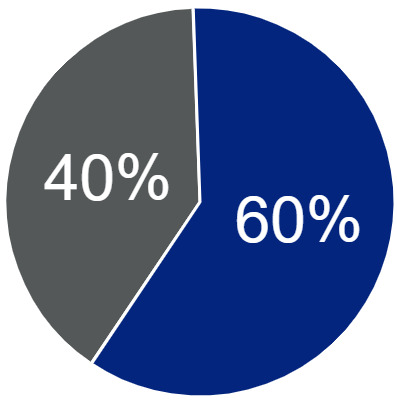








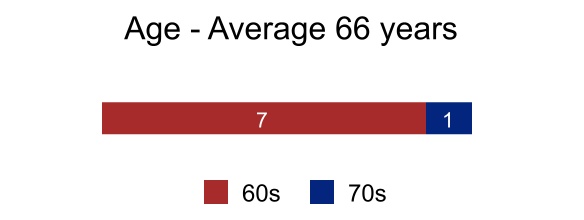












































































































































































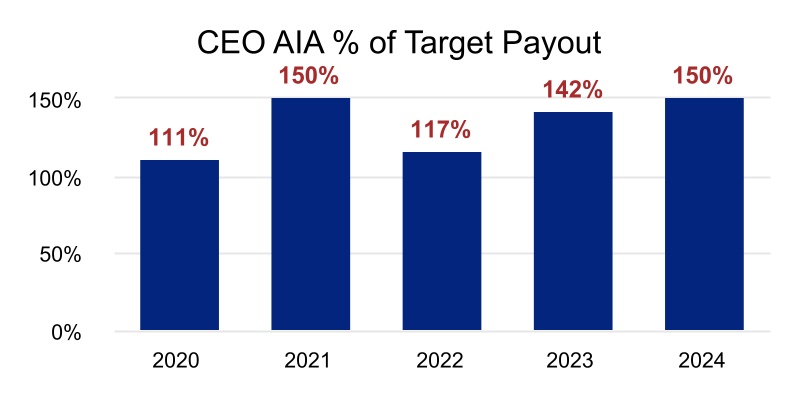

 Pay for Performance: We tie our NEOs’ compensation to performance by setting clear and challenging objectives with the majority of total target compensation consisting of performance-based components.
Pay for Performance: We tie our NEOs’ compensation to performance by setting clear and challenging objectives with the majority of total target compensation consisting of performance-based components.  Multiple Performance Metrics: We use different performance measures for short-and long-term incentives, with multi-year vesting or measurement periods for long-term incentives.
Multiple Performance Metrics: We use different performance measures for short-and long-term incentives, with multi-year vesting or measurement periods for long-term incentives.  Risk Oversight: We annually prepare an Enterprise Risk Management assessment. The Compensation Committee carefully considers the risks associated with all elements of our compensation programs.
Risk Oversight: We annually prepare an Enterprise Risk Management assessment. The Compensation Committee carefully considers the risks associated with all elements of our compensation programs.  Annual Pay for Performance Analysis: We assess pay and performance relative to peers to ensure that actual payouts align competitively.
Annual Pay for Performance Analysis: We assess pay and performance relative to peers to ensure that actual payouts align competitively.  Share Ownership Guidelines: We maintain ownership guidelines for both executives and Trustees. NEO guidelines range from three times to six times base salary, while non-employee Trustee guidelines are five times their annual cash retainer for four quarterly meetings. Executives and Trustees cannot sell company-granted equity until ownership guidelines are met.
Share Ownership Guidelines: We maintain ownership guidelines for both executives and Trustees. NEO guidelines range from three times to six times base salary, while non-employee Trustee guidelines are five times their annual cash retainer for four quarterly meetings. Executives and Trustees cannot sell company-granted equity until ownership guidelines are met.  No Guaranteed Bonuses: We do not provide NEOs with guaranteed cash bonuses.
No Guaranteed Bonuses: We do not provide NEOs with guaranteed cash bonuses.  No Excise Tax Gross-Ups: We have no agreements in place that provide for reimbursement by the Company for the tax obligations of our employees resulting from severance payments made in the event of a change in control and will not enter into any such agreements in the future.
No Excise Tax Gross-Ups: We have no agreements in place that provide for reimbursement by the Company for the tax obligations of our employees resulting from severance payments made in the event of a change in control and will not enter into any such agreements in the future.  No Repricing of Stock Options: We have not issued stock options since 2009. There are currently no outstanding stock options, none of our current NEOs were ever issued stock options and we do not reprice underwater stock options.
No Repricing of Stock Options: We have not issued stock options since 2009. There are currently no outstanding stock options, none of our current NEOs were ever issued stock options and we do not reprice underwater stock options.  No Hedging or Pledging: We have an anti-pledging and anti-hedging policy. Subject to the terms of the policy, executives and Trustees may not (1) hold securities of the Company in a margin account or pledge securities of the Company as collateral for a loan, or (2) enter into hedging or monetization transactions or similar arrangements with respect to securities of the Company.
No Hedging or Pledging: We have an anti-pledging and anti-hedging policy. Subject to the terms of the policy, executives and Trustees may not (1) hold securities of the Company in a margin account or pledge securities of the Company as collateral for a loan, or (2) enter into hedging or monetization transactions or similar arrangements with respect to securities of the Company.  Clawback Policy: We have in place a comprehensive incentive recoupment (i.e., “clawback”) policy.
Clawback Policy: We have in place a comprehensive incentive recoupment (i.e., “clawback”) policy.  Use of Independent Compensation Consultant: The Compensation Committee uses an independent consultant that is precluded from performing any work directly for the management of the Company unless pre-approved by the Committee. No such additional work was requested or performed in 2024.
Use of Independent Compensation Consultant: The Compensation Committee uses an independent consultant that is precluded from performing any work directly for the management of the Company unless pre-approved by the Committee. No such additional work was requested or performed in 2024.  Peer Group: We use an appropriately sized and defined peer group for compensation benchmarking purposes and review the companies comprising the peer group annually.
Peer Group: We use an appropriately sized and defined peer group for compensation benchmarking purposes and review the companies comprising the peer group annually.
















